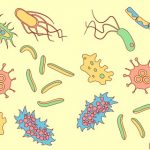by Tim Hulse and James Hadley: We’ve rounded up the most heartwarming and inspirational stories from across the globe…
We’ve rounded up the most heartwarming and inspirational stories from across the globe.
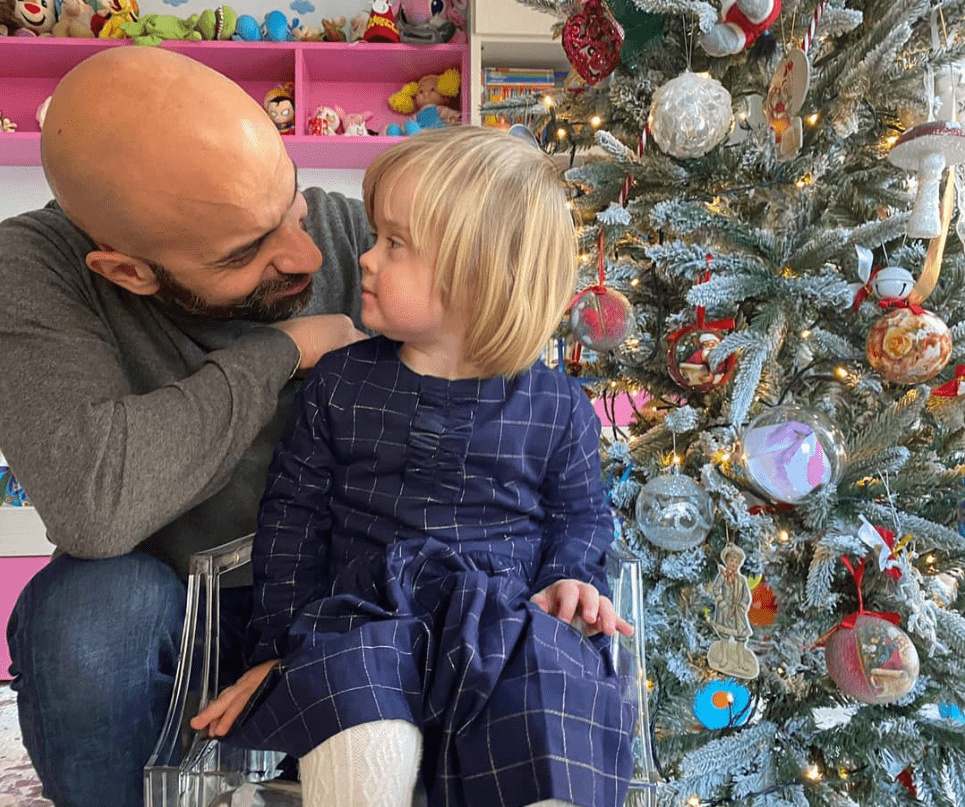 PHOTO: INSTAGRAM.COM/TRAPALUCA
PHOTO: INSTAGRAM.COM/TRAPALUCA
Love Conquers All
Naples resident Luca Trapanese had long wanted to adopt a child, but that presented problems for a gay, single man in Italy. “I was told that I’d only be given a child with an illness, a severe disability or with behavioural problems,” says Trapanese, 41. But he didn’t hesitate when an orphanage called to say they had a month-old baby called Alba with Down’s Syndrome that had been abandoned by its mother and rejected by 20 potential adoptive families.
Trapanese says: “Since I was 14, I have volunteered and worked with the disabled, so I felt I had the right experience. When I first held Alba in my arms, I was overcome with joy.” Trapanese has documented his and his daughter’s life together over two years on social media–challenging stereotypes about fatherhood and the idea of family. “I didn’t mean it to be that way,” he says. “This is nothing but our life story.” [Source: Metro/BBC News]
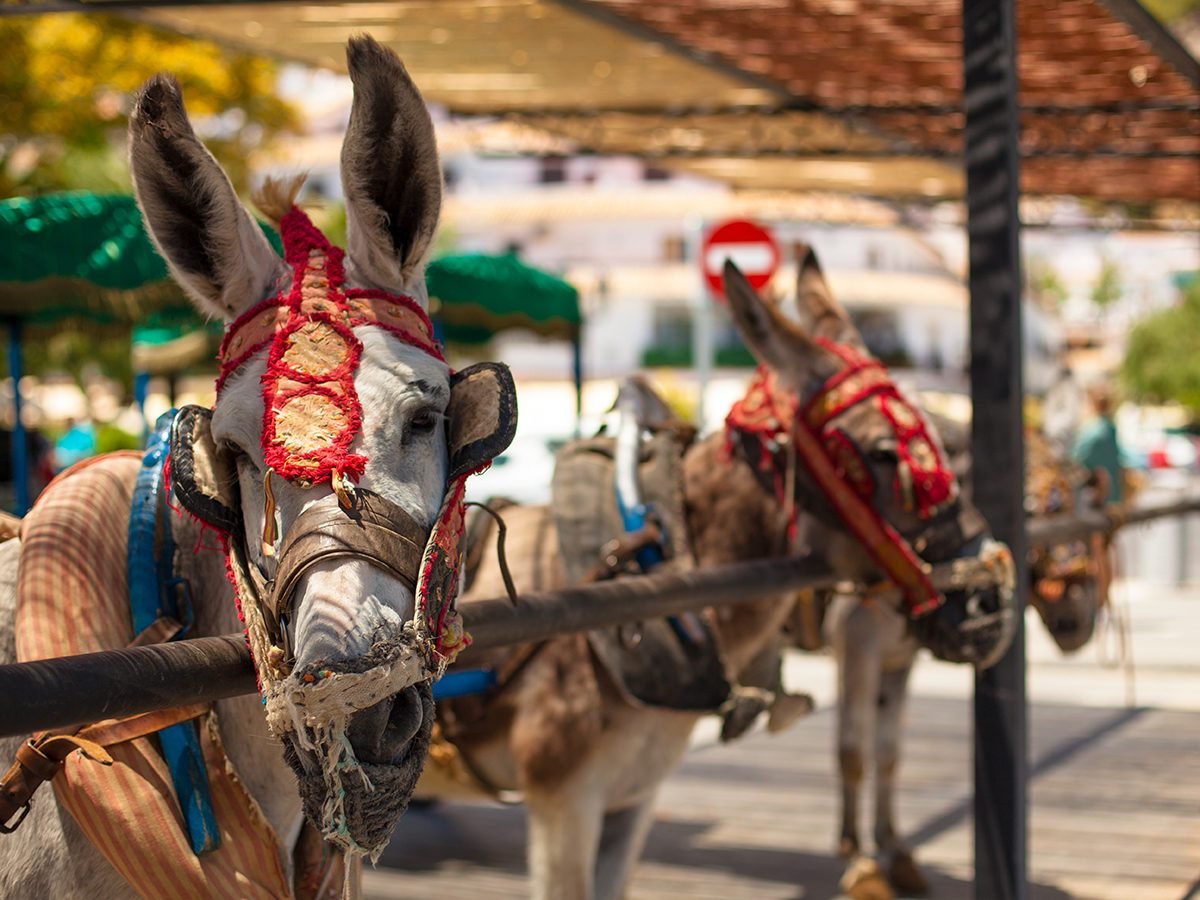 PHOTO: SHUTTERSTOCK
PHOTO: SHUTTERSTOCK
Donkeys Win Better Welfare
Spain is often criticized for an appalling attitude towards animal welfare, particularly in Andalucia. But attitudes are changing. The picturesque village of Mijas, near Malaga, has introduced regulations to protect the donkeys that give tourists rides. These include a limit on the weight they can be made to carry, mandatory rest periods and improvements in living conditions.
“The new laws are important to present a modern society that respects animals,” says local councillor Nicolás Cruz. Bullfighting in the famous 120 year old bullring has not, however, yet been tackled. [Source: El País]
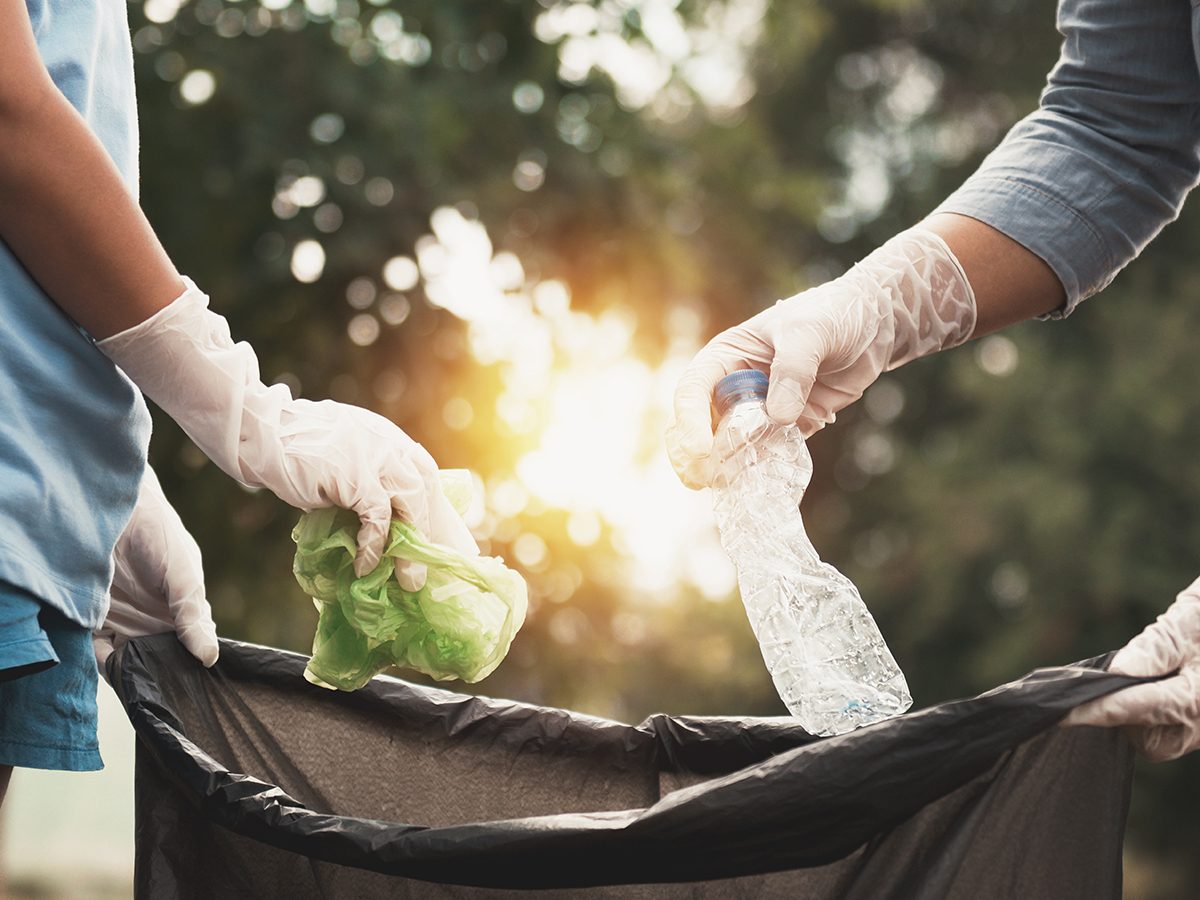 PHOTO: SHUTTERSTOCK
PHOTO: SHUTTERSTOCK
Neighbourhood Clear-Up Project Sparks Viral Craze
Members of a youth charity in a north Paris suburb that is known for gang violence were amazed when their efforts to clean up their neighbourhood inspired a national clean-up campaign.
Hind Ayadi, founder of the arts charity Espoir et Création in Garges-lès-Gonesse, got 40 young people picking up litter and trash to raise awareness of environmental issues and encourage them to take pride in their neighbourhood.
“Teenagers don’t always feel preoccupied by environmental issues but this time they wanted to get involved,” she says.
The volunteers then used social media to challenge the city of Marseille to make a similar effort. To their surprise, Marseille accepted the challenge, and in turn challenged Montpellier. The challenge spread virally from city to city, including Nice, Perpignan and 25 other towns.
Back in Garges-lès-Gonesse, 16-year-old volunteer Adil Nazir, says: “It’s rewarding to see we’ve reached so many people. Now, we’re fully committed to keeping our city clean.” [Source: The Guardian]
 PHOTO: SHUTTERSTOCK
PHOTO: SHUTTERSTOCK
Dogs Show a Nose for Archaeology
The scent-tracking ability of dogs has helped archaeologists discover Iron Age tombs in Croatia dating back nearly 3,000 years.
Vedrana Glavaš, an archaeologist at the University of Zadar, used Belgian malinois (above) and German shepherd dogs that had previously been taught to sniff out graves in criminal investigations. The dogs were able to locate several burial chests containing human bones and artefacts in a hilltop fort in the Velebit mountains on the Adriatic coast.
“Dogs’ noses don’t make mistakes,” she says. “Many archaeologists are looking for burial sites of settlements. I think dogs can solve their problems.” [Source: The Guardian]
Find out the world’s smartest dog breeds—ranked.
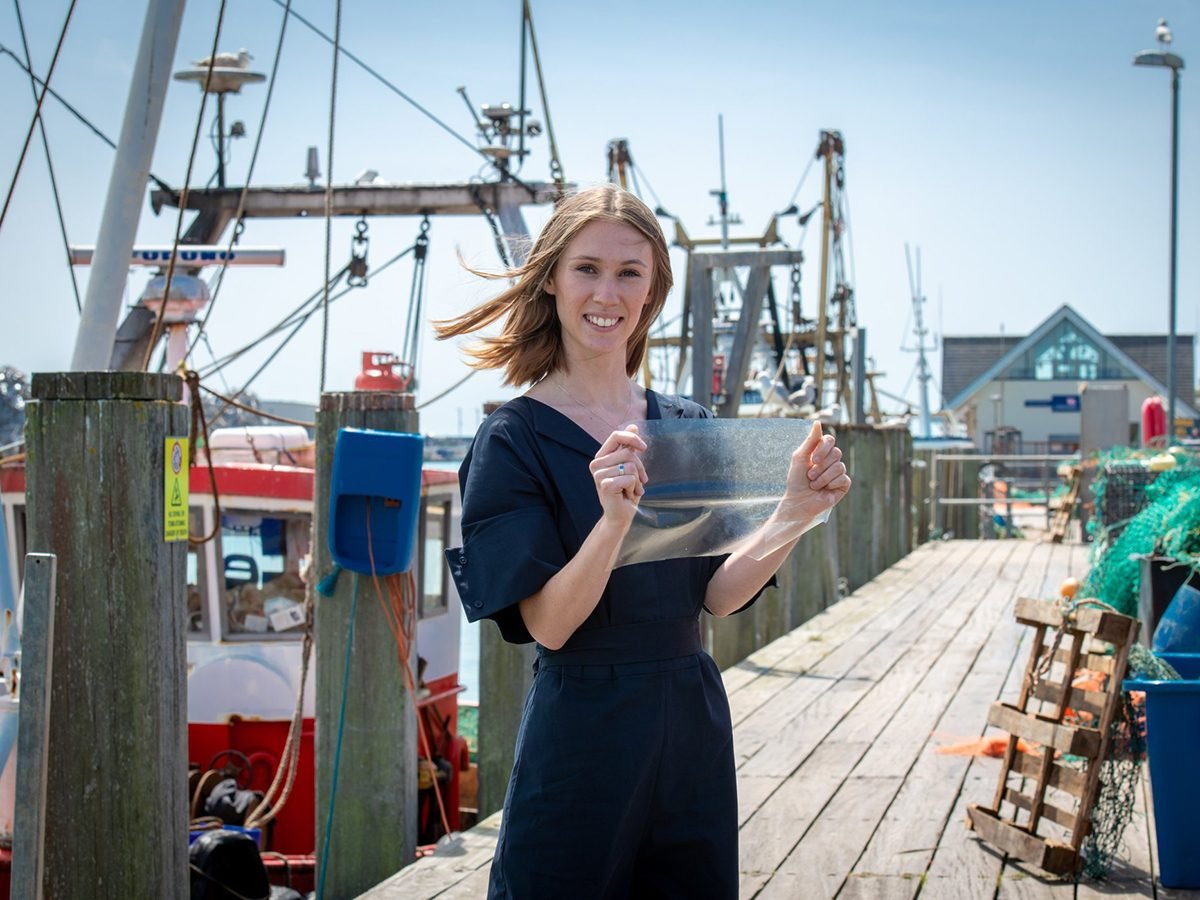 PHOTO: STUART ROBINSON/SUSSEX.AC.UK
PHOTO: STUART ROBINSON/SUSSEX.AC.UK
Graduate Invents Plastic Alternative
A 23-year-old British design graduate has invented a biodegradable material made from fish waste that could one day replace plastic in packaging.
Lucy Hughes (above) used fish offcuts to develop a strong, flexible and translucent material called MarinaTex, which looks and feels like plastic but can be disposed of as compostable food waste.
In the UK alone, around 490,000 tonnes of fish waste is produced by the fish processing industry every year. It is of low commercial value and ends up in landfill or incineration. However, through her research, Hughes found that she could create a substitute for plastic by using red algae to bind proteins from fish skins and scales into translucent sheets.
A single Atlantic cod could generate the organic waste needed for 1,400 bags of MarinaTex, she says. “It makes no sense to me that we’re using plastic, an incredibly durable material, for products that may have a life cycle of less than a day.”
Hughes won the 2019 international James Dyson award for design engineers. Dyson, an inventor and entrepreneur, says: “MarinaTex solves two problems: the ubiquity of single-use plastic and fish waste. I hope it becomes part of a global answer to the abundance of single-use plastic waste.” [Source: Dezeen/The Guardian]
Check out 20 things you had no idea were invented in Canada.
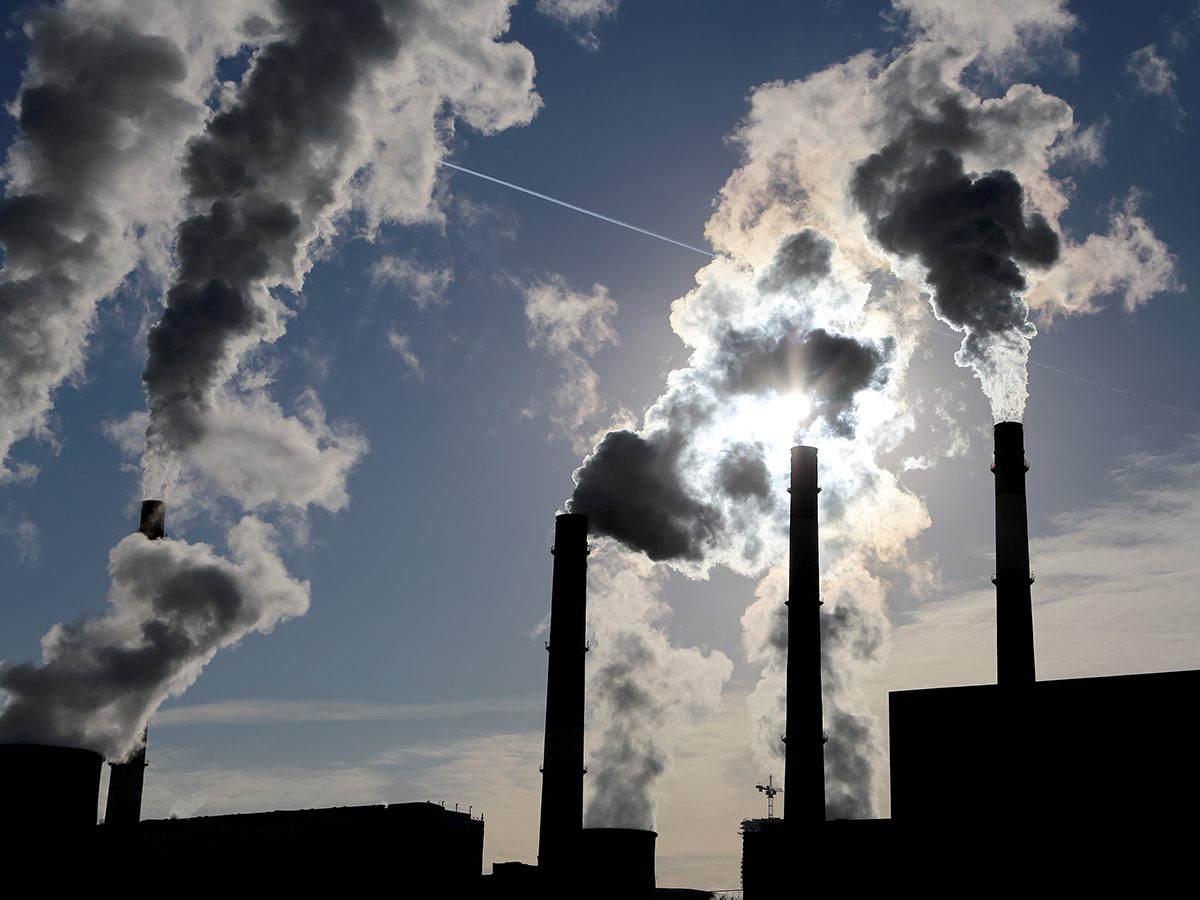 PHOTO: SHUTTERSTOCK
PHOTO: SHUTTERSTOCK
Bank Calls Time on Fossil Fuels
The European Union’s investment bank (EIB) is to stop funding oil, gas and coal projects at the end of 2021. The bank has funded €13.4-billion of fossil fuel projects since 2013, but will now make lending decisions that observe the Paris climate accord. It will invest €1-trillion towards climate-focused projects over the next decade.
EIB president Werner Hoyer described the shift in strategy as “a quantum leap in its ambition”. [Source: BBC News]
Find out how climate change is making you sick.
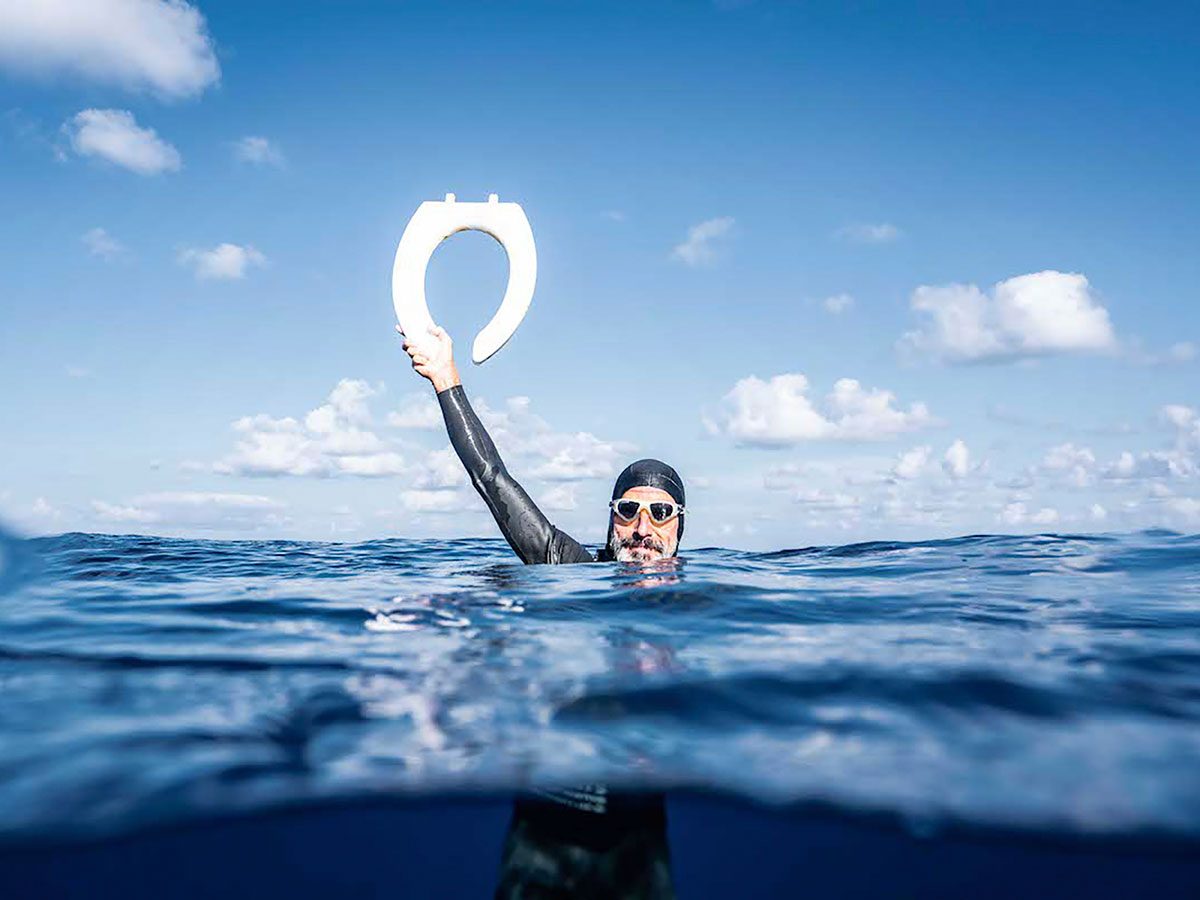 PHOTO: THE VORTEX SWIM
PHOTO: THE VORTEX SWIM
Swimmer’s Mission to Expose Plastic Threat
Long-distance swimmer Benoit Lecomte has swum 555 kilometres over the course of three months through the so-called Great Pacific Garbage Patch to highlight the issue of plastic consumption.
The 52-year-old Frenchman (pictured) sailed from Honolulu to San Francisco, swimming through the 79,000-ton trash vortex he describes as mainly “an underwater smog of microplastic.” He spent eight hours a day in the water, finding everything from abandoned fishing nets to old toilet seats.
His supporting crew collected microplastic samples and placed GPS tags on floating plastic waste, so that researchers can better understand how plastics move through the oceans. “All the plastic I saw didn’t surprise me,” Lecomte said afterwards. “I was expecting it to be pretty bad. But after seeing it, day after day, I became numb to it—and my numbness surprised me.”
These frightening facts will make you use less plastic.
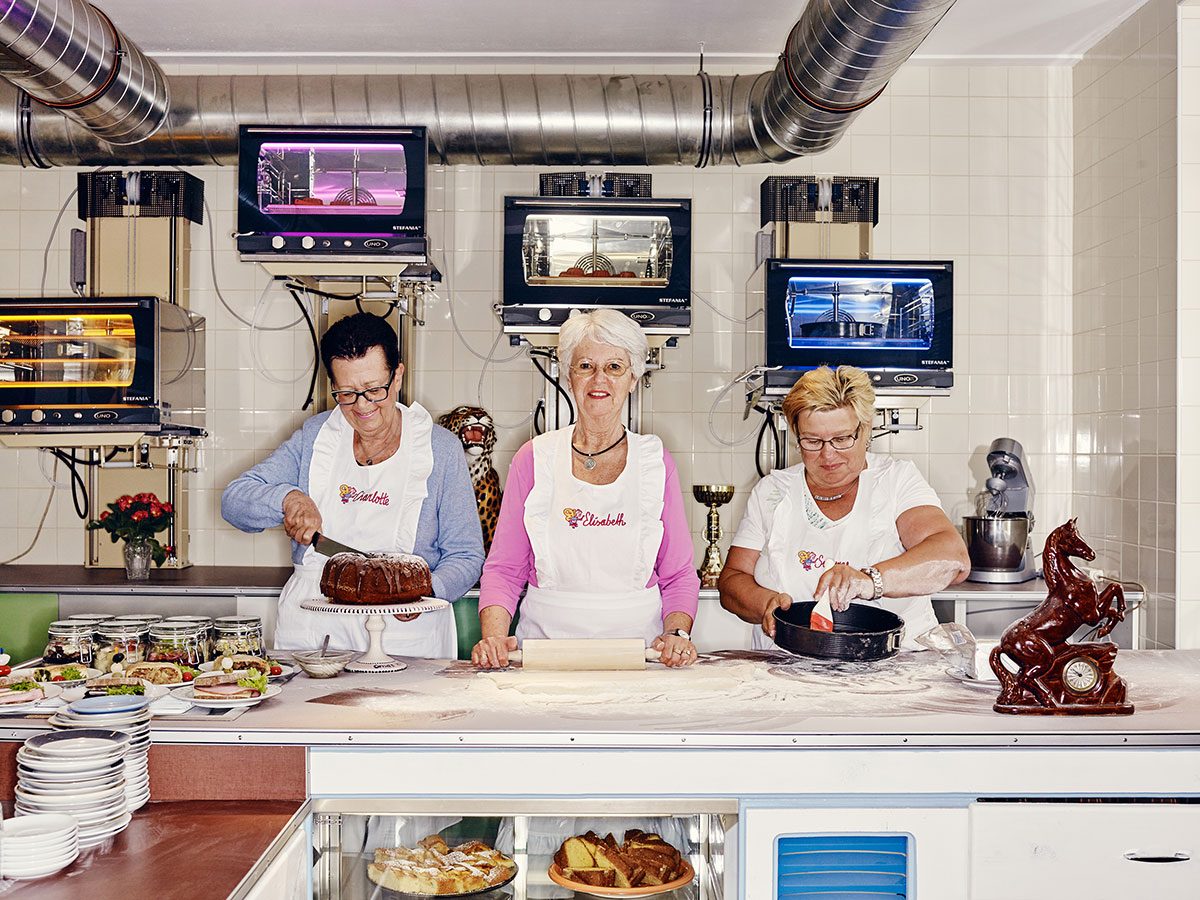 PHOTO: MARK GLASSNER
PHOTO: MARK GLASSNER
Grans Serve Up Old-School Hospitality
Vienna’s cafés are world-famous for their coffee and cake, but one coffee house in the city’s 4th district also offers a unique version of “gemütlichkeit,” that form of cosiness that Austrians have made their own.
The Vollpension café is largely staffed by female pensioners, or “omas” (grannies), who lovingly bake the café’s strudels, chocolate tortes and poppy-seed cakes. The community-conscious enterprise provides its staff with extra income and an antidote to isolation through contact with younger customers.
“This is more than just a coffee shop. Our guests are supposed to feel as if they’re at their oma’s place,” explains co-owner Hannah Lux, 31. The café is decorated with vintage items—lace doilies, animal figurines and other flea market finds—all of which add to the homely atmosphere.
“It’s not easy for young and old people to connect in everyday life,” says Lux.
Café worker Judith Siöberg, a grandmother of two, says, “We tell them our life experiences: it’s generations coming together.”
 PHOTO: SHUTTERSTOCK
PHOTO: SHUTTERSTOCK
Women unite to combat prejudice
Islamophobia and anti-Semitism are continuing blights on French society, but two Parisian women—one Jewish, the other Muslim—have come together to fight the tensions between Muslims and Jews that they see around them in their day-to-day life.
Samia Essabaa, a Muslim teacher, and Suzanne Nakache, a Jewish former pharmacy owner, co-founded the women’s group Langage de Femmes with the aim of bringing together women from different ethnic and religious backgrounds who otherwise would be unlikely to meet or hear each other’s point of view. They hold film screenings, social events and excursions.
“We have women who wear the headscarf, cleaning women, executives from big companies, Jewish women who wear wigs, Christian women from posh areas, and secular women,” says Nakache.
Essabaa and Nakache know they can make only a small difference, but they are determined to do their bit to foster better understanding.
In early 2020, the group plans to travel to Poland to visit Auschwitz, the death camp where the Nazis murdered almost a million Jews. “We wanted to show what hate leads to,” says Nakache. “That was the fate of Jews then, but it might be Muslims tomorrow.”
Check out 20 ways you can make the world a more peaceful place.
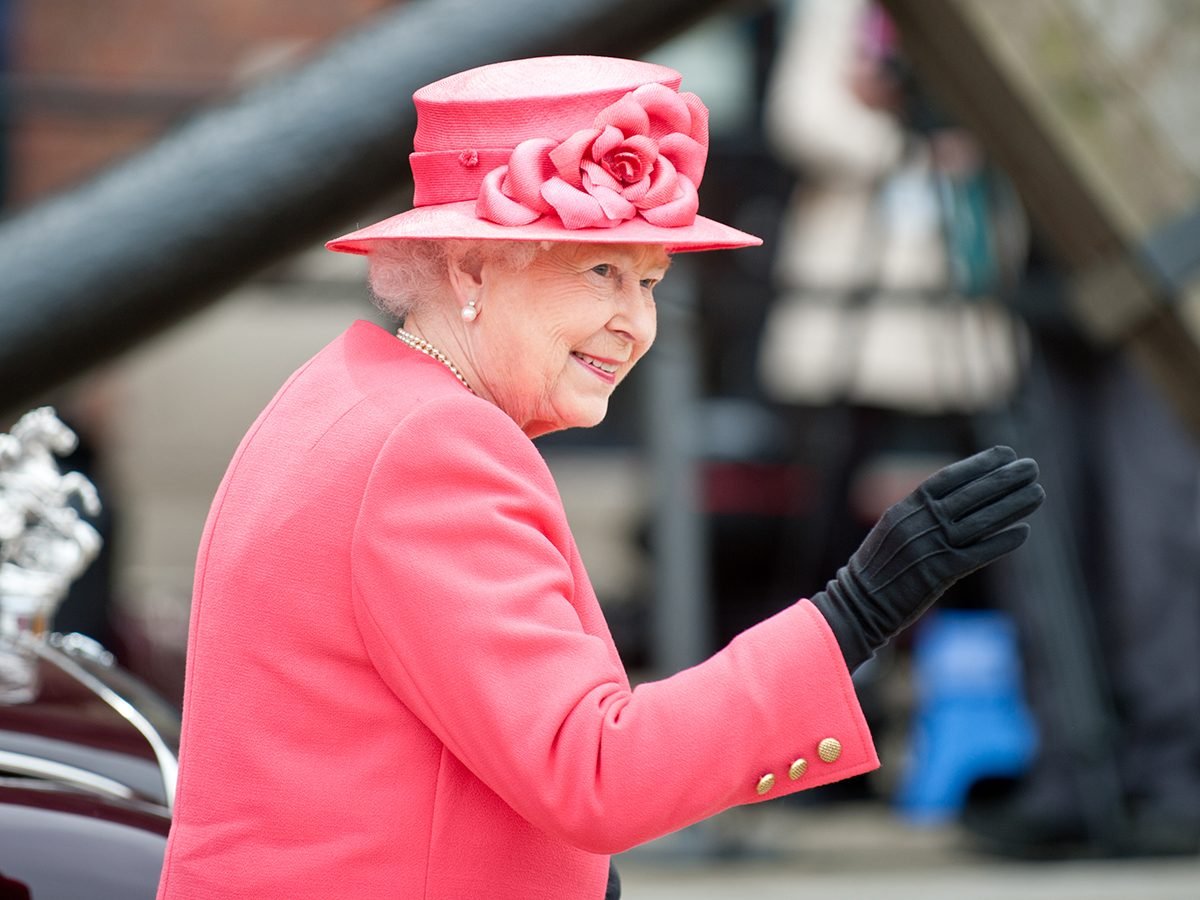 PHOTO: SHUTTERSTOCK
PHOTO: SHUTTERSTOCK
The Queen gives fake fur the thumbs-up
At the age of 93, Queen Elizabeth II of Britain has made a notable sartorial statement by removing real fur from her day-to-day wardrobe.
The move was revealed by her senior dresser, Angela Kelly. “If Her Majesty is to attend an engagement in particularly cold weather, fake fur will be used to make sure she stays warm,” she says.
The Queen’s historic outfits will remain with their fur intact and she won’t get rid of anything she already owns. Nonetheless Claire Bass, of animal charity Humane Society International, says the decision will send “a powerful message that fur is firmly out of fashion”.
Here are more things you probably didn’t know about the Queen.
 PHOTO: SHUTTERSTOCK
PHOTO: SHUTTERSTOCK
A molecular solution for storing the sun’s heat
Swedish scientists say they have solved one of the challenges of solar energy: how to store the sun’s heat for later use.
The team from Chalmers University of Technology in Gothenburg have designed a liquid molecule made of carbon, hydrogen and nitrogen that traps and stores the sun’s energy until a catalyst triggers its release as heat when required.
They say the technology has the potential to provide heat on demand to homes, vehicles and even clothing.
The molecule can be used to make a laminate that can be applied to windows or a moving vehicle; the coating collects solar energy and releases heat, reducing the electricity required for heating spaces and curbing carbon emissions.
Check out 13 green living myths you need to stop believing.
 PHOTO: SHUTTERSTOCK
PHOTO: SHUTTERSTOCK
Seaweed nappies that last longer
Swiss design graduate Luisa Kahlfeldt has designed a new diaper that surpasses other reusable cloth nappies in sustainability.
Her award-winning Sumo nappy is made entirely of a fabric composed of seaweed and eucalyptus. Because it’s made of one material it is more easily recycled than most other cloth nappies that use laminated polyester or polyurethane, as well as hooks and fastenings.
Kahlfeldt says that the nappy can withstand repeated machine-washing, and that she has managed to engineer stretchiness in the fabric by using a special method of knitting natural yarns, so avoiding the need for synthetic elastic.
An estimated 17 million disposable nappies are binned every day in the European Union.
Psst—this is how many plastic bottles Torontonians discard every five minutes.
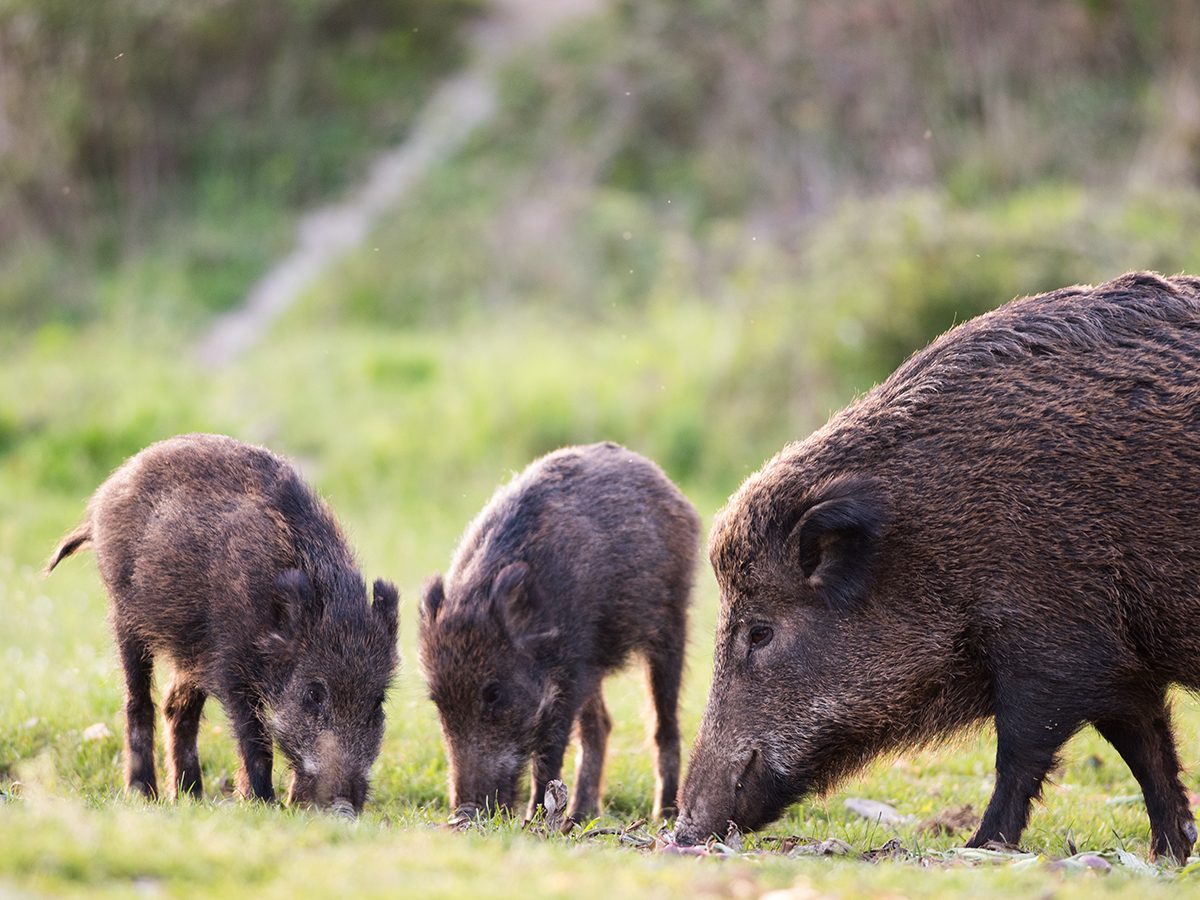 PHOTO: SHUTTERSTOCK
PHOTO: SHUTTERSTOCK
Swine stamp out crime
Wild boars have been credited with frustrating drug dealers’ schemes in Tuscany. Police say the gang’s €20,000 stash of cocaine was buried in woods near Montepulciano, Italy, but was trampled by a herd of the wild pigs, scattering the powder around the forest. The unusual drugs bust came to light after detectives tapped the phones of a suspected gang; four men now face trafficking charges. Some two million boar are thought to roam Italy.
Don’t miss these incredible (true!) stories of the world’s dumbest criminals.
 PHOTO: SHUTTERSTOCK
PHOTO: SHUTTERSTOCK
Instagram’s unpaid lifeguard
Like many young women, Ingebjørg Blindheim uses Instagram all the time—but for an unusual reason. Blindheim monitors the hidden corners of the social media platform, where troubled young people meet to post about their darkest feelings and discuss self-harm or even suicide.
She currently keeps track of around 450 private Instagram accounts. When she feels someone may be close to taking their life, the 22-year-old Norwegian alerts emergency services. She has no formal training, but was inspired to action by the suicide of a teenage friend she met while herself being treated for mental-health issues.
“I’m not just going to watch someone saying they’re going to kill themselves and ignore it and hope for the best,” says Blindheim, who has earned the nickname “the lifeguard” for her unpaid work.
Find out 12 ways you can help someone with depression, according to psychologists.
 PHOTO: VOLLPENSION.WIEN
PHOTO: VOLLPENSION.WIEN
Rudeness Off the Agenda in New Approach to TV Debate
A Norwegian TV show is taking some of the toxicity out of current political debate by forcing guests to be courteous to each other.
Called Einig? (meaning Agreed?), the show has a few simple rules: no interrupting, no rudeness and participants must promise to try to understand opposing arguments.
The series is the brainchild of TV presenter Ingunn Solheim (pictured), 39, who started to search for a more respectful format after presiding over a particularly ill-tempered TV debate on immigration three years ago.
So far the idea seems to be working, with quarrel-free debates held on abortion, feminism and climate change.
“It is a bit like marriage therapy,” Solheim says. “We are trying to make guests actively listen and explore different points of view rather than attack each other.”
Could you use a refresher on being courteous? Here are 12 rude conversation habits you need to stop ASAP.
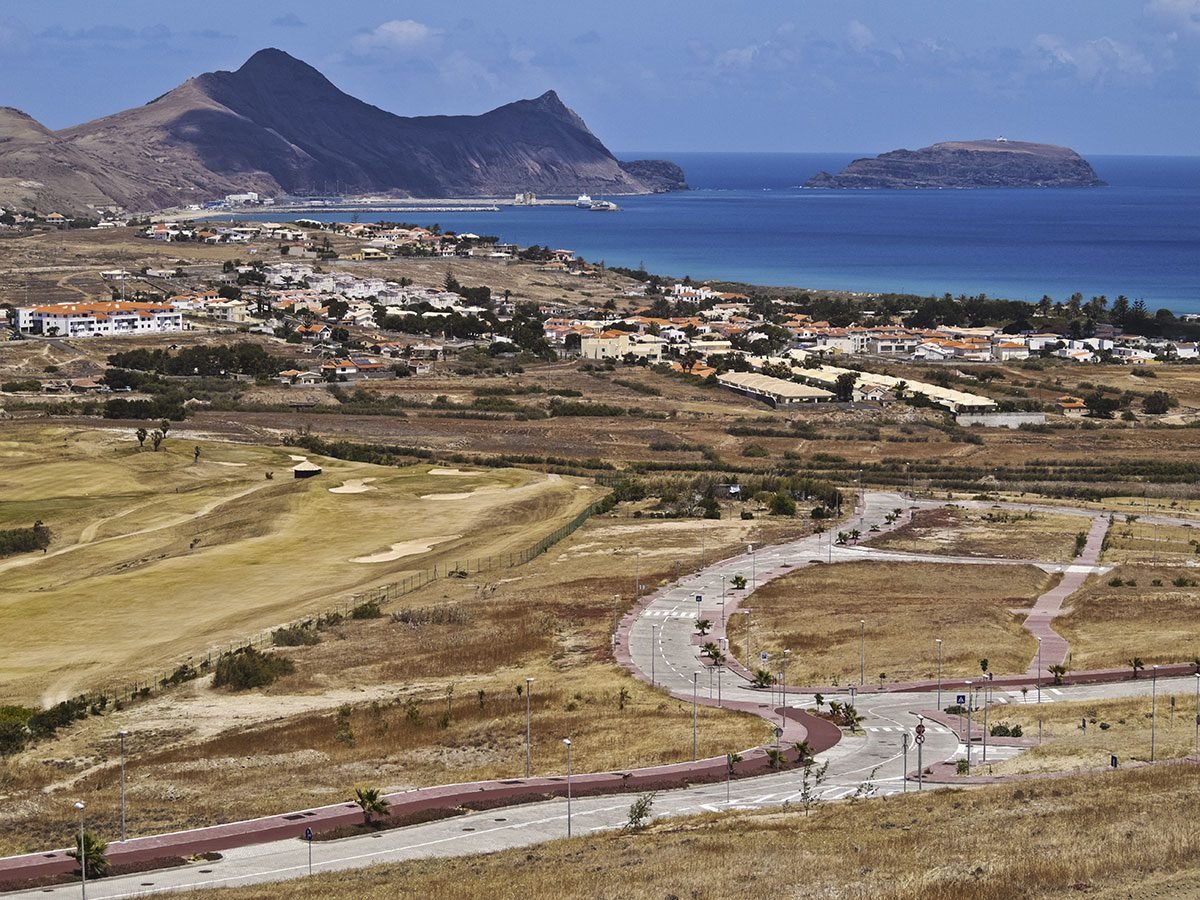 PHOTO: SHUTTERSTOCK
PHOTO: SHUTTERSTOCK
Island Tests a Renewable Energy Role for Cars
Owners of electric cars on the tiny Atlantic island of Porto Santo, north of Madeira, are able to earn money by supplementing the wind and solar energy that provides most of the Portuguese island’s power.
The scheme uses adapted electric vehicles that plug into the island’s electric grid to charge the car with cheap solar power during the day. At night, the energy stored in a parked car’s two-way battery feeds back into the grid via a cable to help provide power for people’s homes. The car retains enough electricity to allow it to be started the following day.
Drivers can thus buy energy cheaply and sell it back to the grid at night at a profit, says Veronika Brandmeier of the German-based Mobility House consultancy: “It really changes the whole idea of owning a car.”
 PHOTO: SHUTTERSTOCK
PHOTO: SHUTTERSTOCK
Candid Tweet Inspires Helpline for Lonely Youths
A single tweet from a lonely young Dutch woman has led to the creation of a hotline that connects isolated young people with one another.
Nadï van Watering, 25, sent the tweet, hashtagged “maatjegezocht” (“seeking a pal”) hoping for a reply. To her surprise, it generated a million “likes” and 50,000 messages.
The massive response was spotted by a youth worker, Jolanda van Gerwe, who was inspired to start a hotline for lonely youngsters between the ages of 12 and 30. “We give lonely young people a place to be heard and put them in touch with youth clubs specializing in kids who are lonely,” she explains.
Van Watering, meanwhile, says: “I’ve now met two people that I can call friends. And I’ve had so many sweet comments.”
 PHOTO: SHUTTERSTOCK
PHOTO: SHUTTERSTOCK
European Union Finds a Fix for Appliances
New “right to repair” legislation will make household appliance products such as fridges, washing machines and TVs easier to fix across Europe. From next 2021, manufacturers will have to make appliances longer-lasting and supply spare parts to independent professional repairers for up to 10 years after the purchase date.
It is estimated that the move could reduce energy bills by €20 billion per year in Europe from 2030.
Find out the surprising ways you’re shortening the life of your refrigerator.
 PHOTO: SHUTTERSTOCK
PHOTO: SHUTTERSTOCK
Paris Rolls Out Farming on the Roof
The idea of farming in Paris may sound strange, but the top of a six-storey building in the centre of the French capital is set to become the world’s largest rooftop farm.
The urban oasis, under construction in Paris’s 15th arrondissement, spans 14,000 square metres and will grow more than 30 plant species. It is expected to produce around 1,000kg of fruit and vegetables every day this summer, tended by around 20 gardeners using organic methods.
“The goal is to make the farm a globally recognized model for sustainable production,” says Pascal Hardy of Agripolis, the urban-farm company behind the project.
Located above the Paris Expo Porte de Versailles exhibition centre in the southwest of the city, the farm will have its own on-site bar and restaurant for 300 diners, using vegetables and fruit grown on-site.
Check out these urban gardening tips—they’re perfect for small spaces!
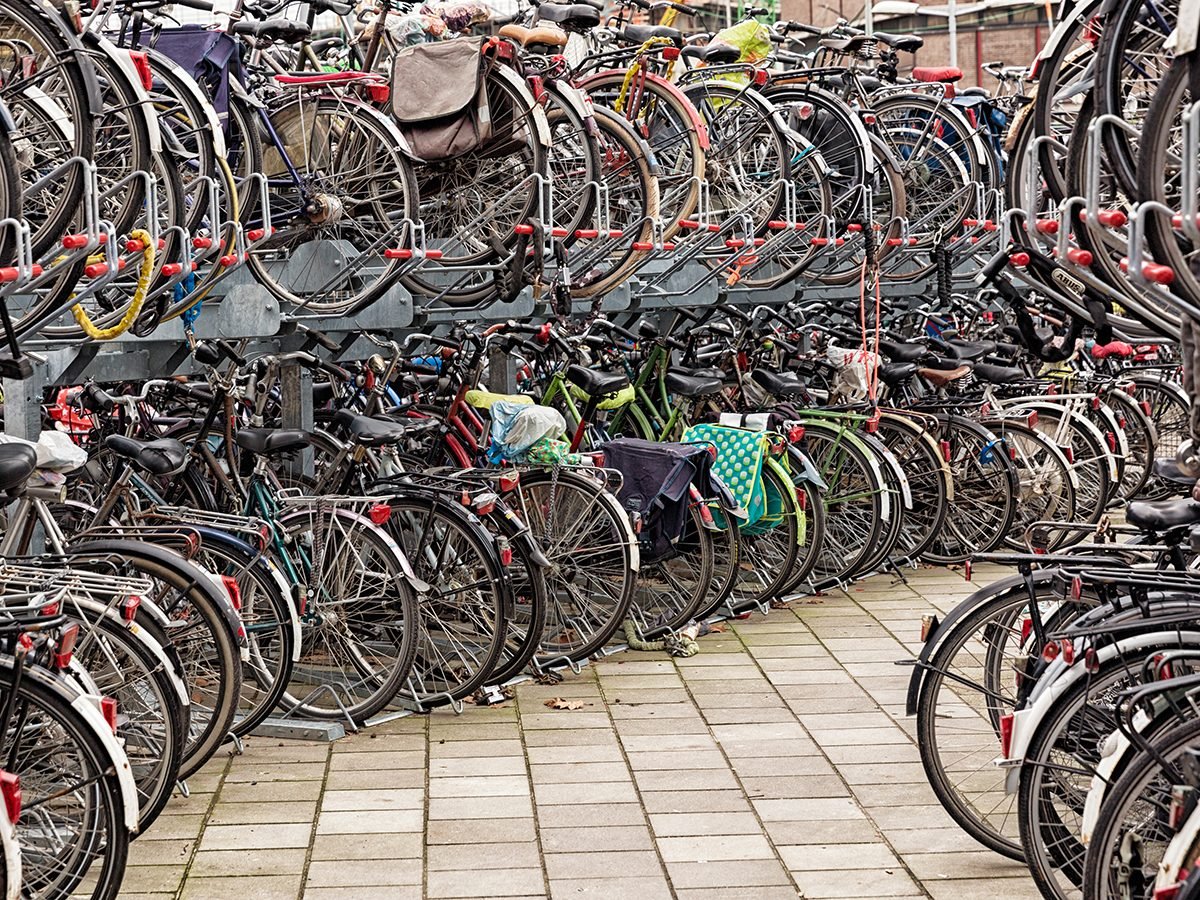 PHOTO: SHUTTERSTOCK
PHOTO: SHUTTERSTOCK
Dutch City Takes Bike Storage to New Heights
The Netherlands has more bicycles than people—22 million for a population of 17 million—and finding a space to park can be a challenge. To address the problem, the city of Utrecht has opened the world’s largest multi-storey parking area for bicycles at its railway station.
The concrete-and-glass structure has space for 12,500 bikes over three floors, including bikes for rent. It is part of an ongoing drive to enhance cycling infrastructure across the Netherlands.
“There’s still much to be done,” says Stientje van Veldhoven, a junior infrastructure minister. “I’d like us to make better use of what I call this secret weapon against congestion, poor air quality in cities and climate change.”
Find out how the least bike friendly city in Canada is reinventing itself as a cyclist’s dream.
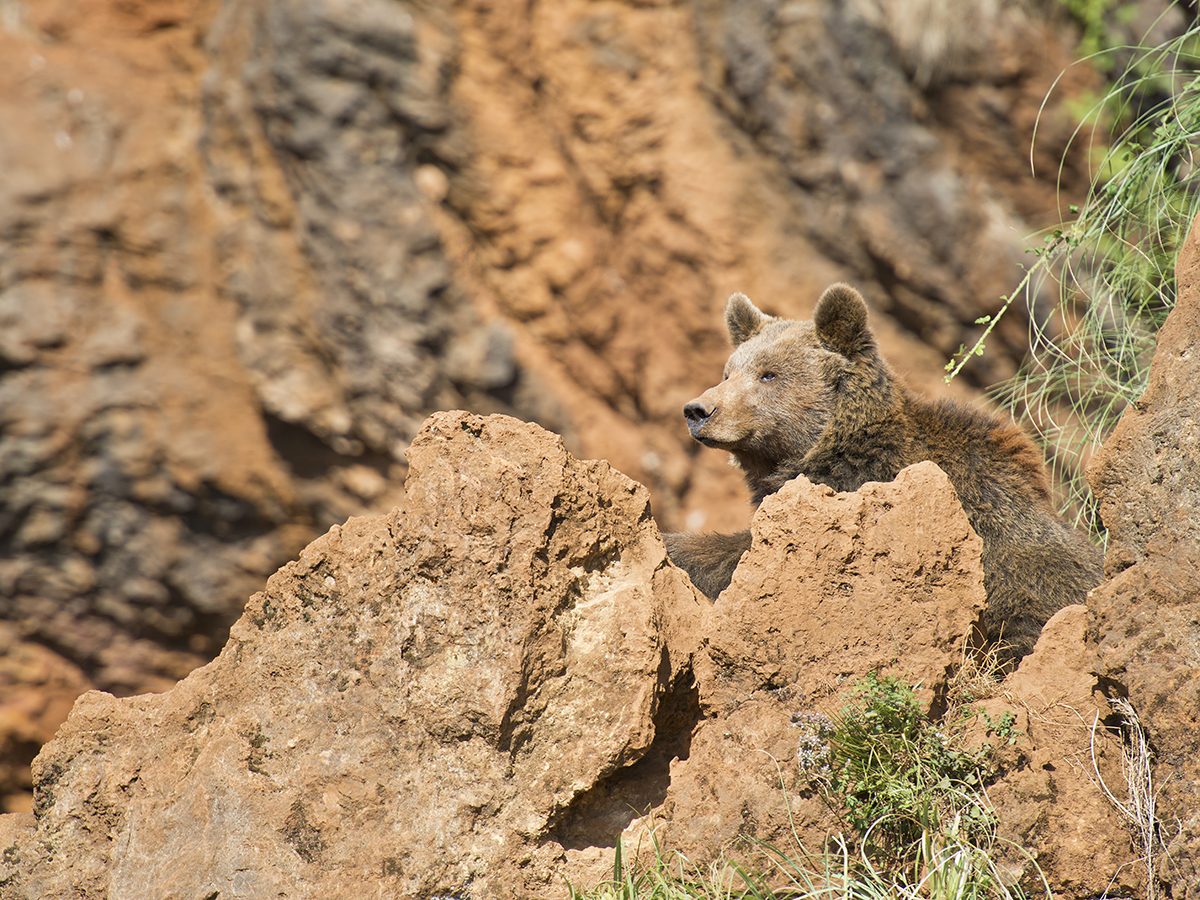 PHOTO: SHUTTERSTOCK
PHOTO: SHUTTERSTOCK
Bears Claw Their Way Back in Northern Spain
Nature lovers are celebrating the return of the Cantabrian brown bear to the mountains of northwest Spain after the mammal (above) had been pushed to the point of extinction.
Deforestation, manmade infrastructure, trapping and hunting had combined to drastically reduce bear numbers in the Cantabrian Mountains, which at their lowest point were down to around 65.
Following a campaign by conservation groups, the population has grown steadily and numbers have reached 350, with 40 more in the Pyrenees. The recovery has been attributed to a mix of environmental protection and education. Bear-watching has also boosted the region’s tourist economy.
Sadly, these wild animals were added to the endangered list in 2019.
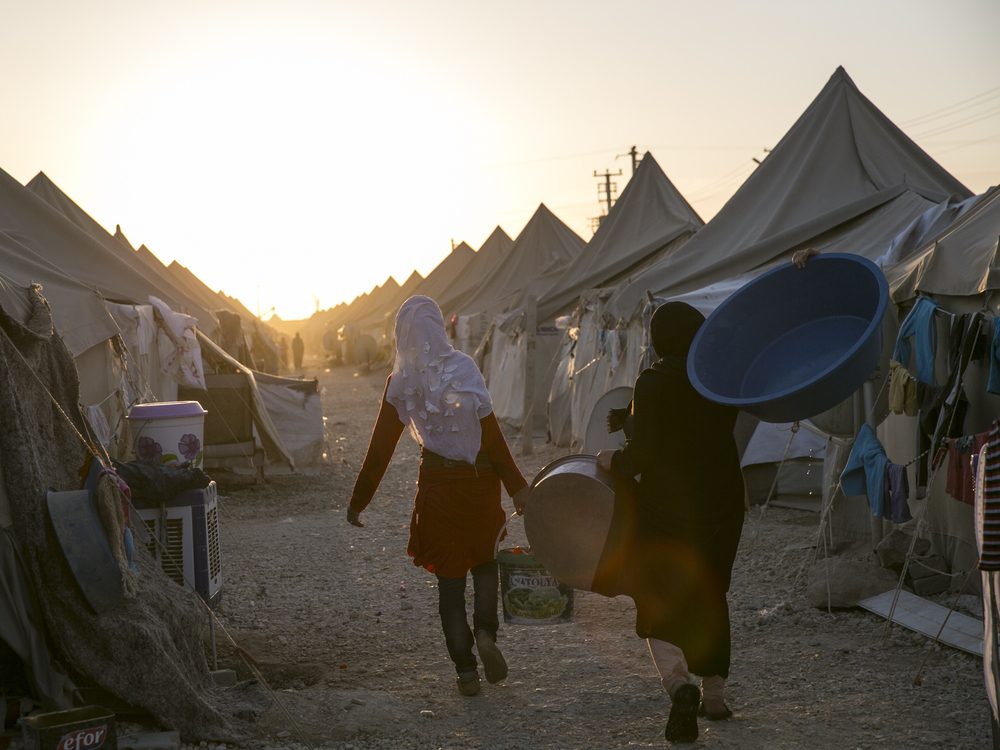 PHOTO: TOLGA SEZGIN/SHUTTERSTOCK
PHOTO: TOLGA SEZGIN/SHUTTERSTOCK
The kind act that helped shape a life
Mevan Babakar had a difficult start in life. Her Kurdish parents fled Iraq during the Gulf War in the 1990s, travelling through Turkey, Azerbaijan and Russia until the family reached the West and spent a year in a refugee camp near Zwolle in the Netherlands.
Mevan now works for a fact-checking charity and lives happily in London. But she never forgot the refugee camp worker all those years ago who, out of the kindness of his own heart, bought her a red, shiny bike. “My five-year-old heart exploded with joy,” she remembers.
Mevan, today aged 29, decided to track down the man and posted an old photo of the two of them in the camp on Twitter. To her surprise, the tweet was shared more than 7,000 times and within 36 hours the charity worker, Egbert, was located in Germany.
The pair were reunited and Mevan posted another photograph: “This is Egbert. He’s been helping refugees since the 90s. He thought the bike was too small a gesture to make such a big fuss about.”
For Mevan, the lesson is that small actions can have big consequences: “The kindness Egbert showed me continues to shape me. That’s the magical thing about kindness: it doesn’t cost anything and it changes the world one person at a time.”
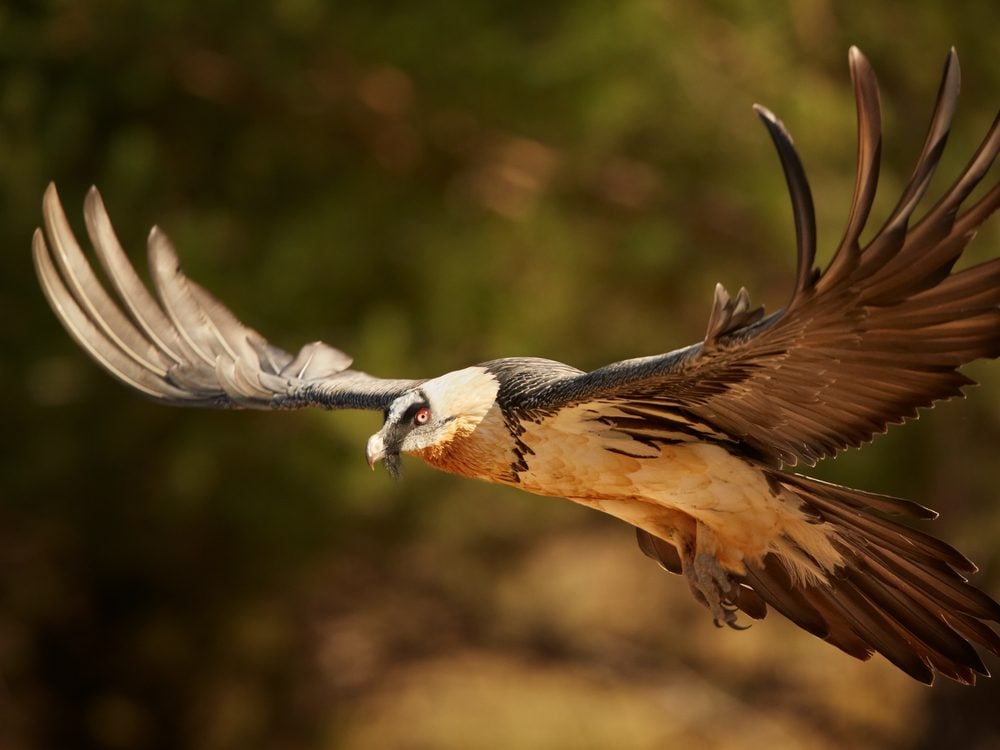 PHOTO: SHUTTERSTOCK
PHOTO: SHUTTERSTOCK
Bearded vultures make an Alpine comeback
The bearded vulture (pictured) was hunted to extinction in the Alps in the early 20th century, but it is making a remarkable comeback. This year, a record 35 vulture chicks took to the skies, thanks to a 30-year reintroduction project. Fifty pairs of bearded vultures now
breed in the French Alps.
“People used to believe these vultures would carry off small children and sheep,” explains Théo Mazet, a French naturalist helping to re-establish the birds. In fact, the bearded vulture, or lammergeier, is the only bird species to live on a scavenged diet of animal bones—and that’s useful, says Mazet.
Unlike wolves and bears, the vultures don’t prey on cattle or game. “They act as rubbish collectors, which helps keep the mountain environment healthy,” he says.
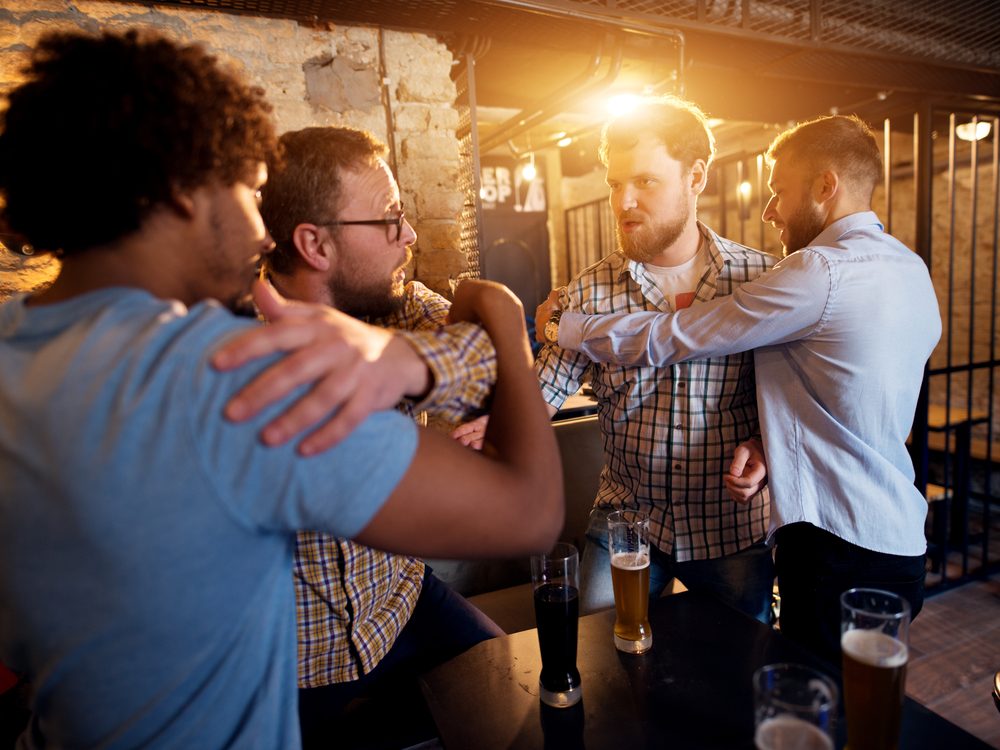 PHOTO: SHUTTERSTOCK
PHOTO: SHUTTERSTOCK
Bystander effect debunked
The largest-ever study of violent incidents captured on CCTV suggests that there are more Good Samaritans among us than we might suppose.
Researchers from universities in Denmark, Holland and the UK viewed video footage of more than 200 arguments and assaults in the cities of Amsterdam, Lancaster (UK) and Cape Town and found that in nine out of 10 cases someone stepped in to help victims.
The finding goes against the “bystander effect”, a principle of social psychology which holds that the larger the number of observers to an emergency, the less likely it is that the victim will receive help.
Lead author Dr Richard Philpot of Lancaster University and University of Copenhagen, says: “The fact that bystanders are much more active than we think is reassuring for the public.”
Find out how to stop bullying in the workplace once and for all.
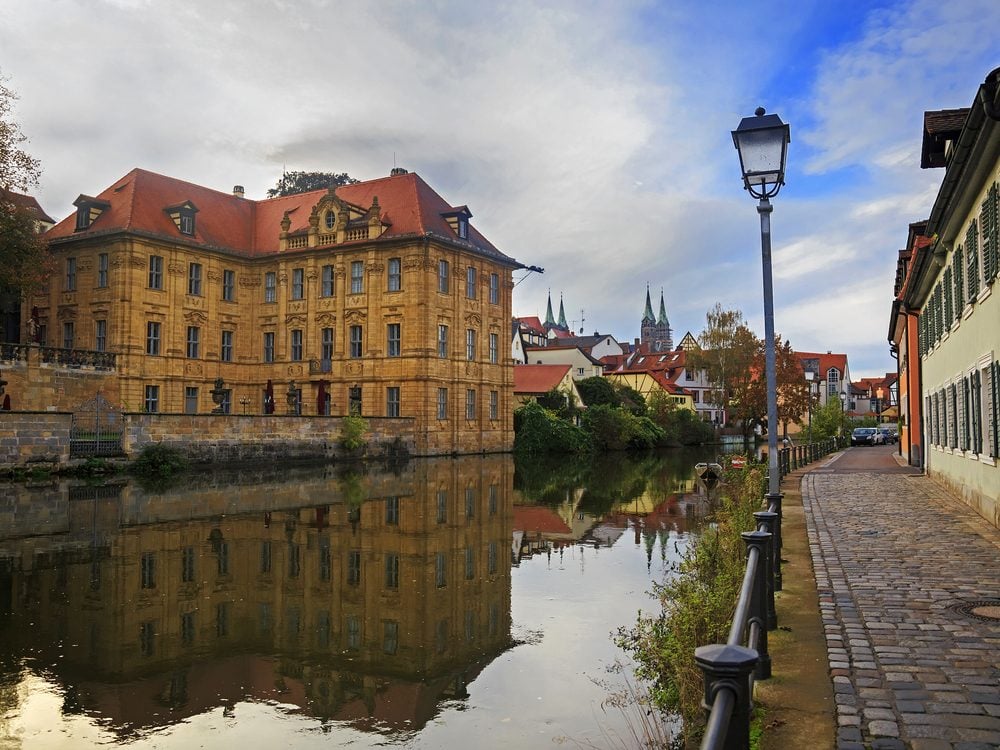 PHOTO: SHUTTERSTOCK
PHOTO: SHUTTERSTOCK
The secret donor who just keeps on giving
A mystery benefactor has been handing out “surprise bags” (wundertüete) of money—more than €200,000—for local causes in the German city of Brunswick. The bags have been appearing at regional newspaper the Braunschweiger Zeitung with instructions on which charity the money should go to.
A hospice, churches in need of repair and a bureau for crime victims are among causes to have benefitted. The donor’s identity is a mystery.
“We simply don’t know, and we don’t want to endanger these good deeds,” says journalist David Mache.
 PHOTO: SHUTTERSTOCK
PHOTO: SHUTTERSTOCK
Scientists find there’s a sweeter side to sweat
Portuguese scientists may have found a way to make our clothes smell better when we perspire by treating cotton fabric so that it emits a lemony citronella scent when it comes into contact with sweat.
The team from the University of Minho used a protein found in pigs’ noses that binds to scent molecules and added carbohydrate-binding molecules that latch on to cotton.
“Functional textiles incorporating fragrances could be an effective clothing deodorizing product,” the team reports. As a bonus, citronella is an insect repellent.
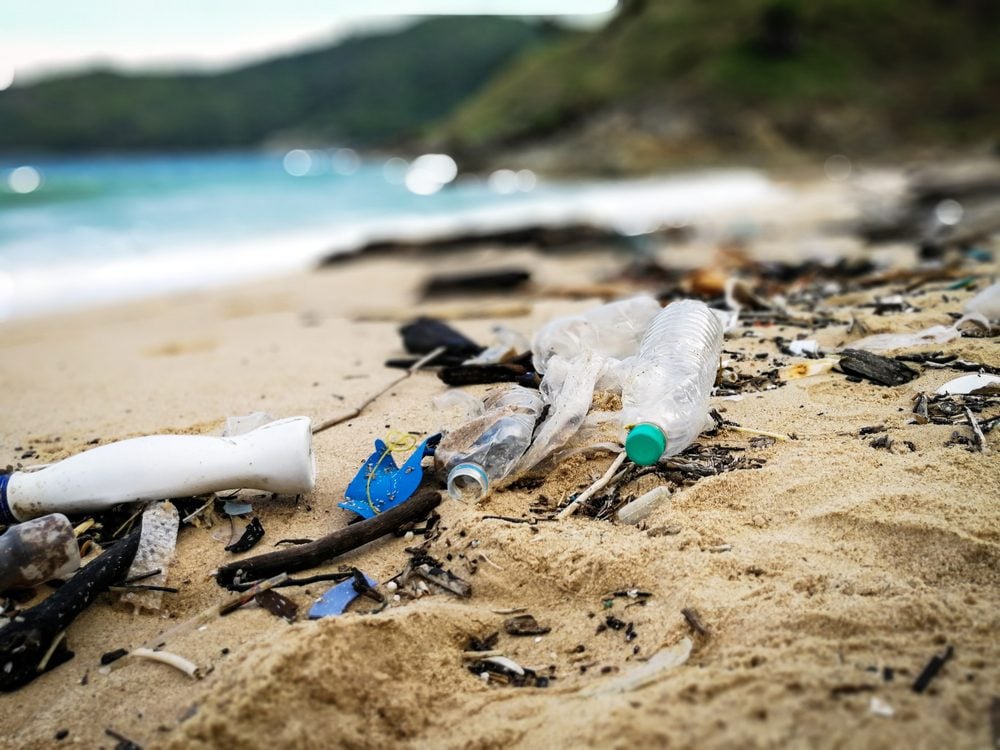 PHOTO: SHUTTERSTOCK
PHOTO: SHUTTERSTOCK
Pensioner clears plastic from dozens of beaches
Retired schoolteacher Pat Smith was shocked by a TV documentary, A Plastic Ocean, on the damage done to the world’s oceans by plastic pollution. She was so shocked that she felt she had to do something.
Armed with a large recycling bag and a heavy-duty litter picker, the 71-year-old spent a year scouring 52 beaches in Devon and Cornwall in the west of England for plastic rubbish—collecting anything from bottles to abandoned fishing nets. “I thought, ‘My God, this has happened in my lifetime. This is my generation.’ We have been consuming plastic so much that we are causing an ocean crisis.”
Nicknamed “Action Nan”, Smith tackled a new beach each week—and in so doing inspired her granddaughter to organize litter-picking in the playground at her school.
Don’t miss the tiny changes you can make to help the environment.
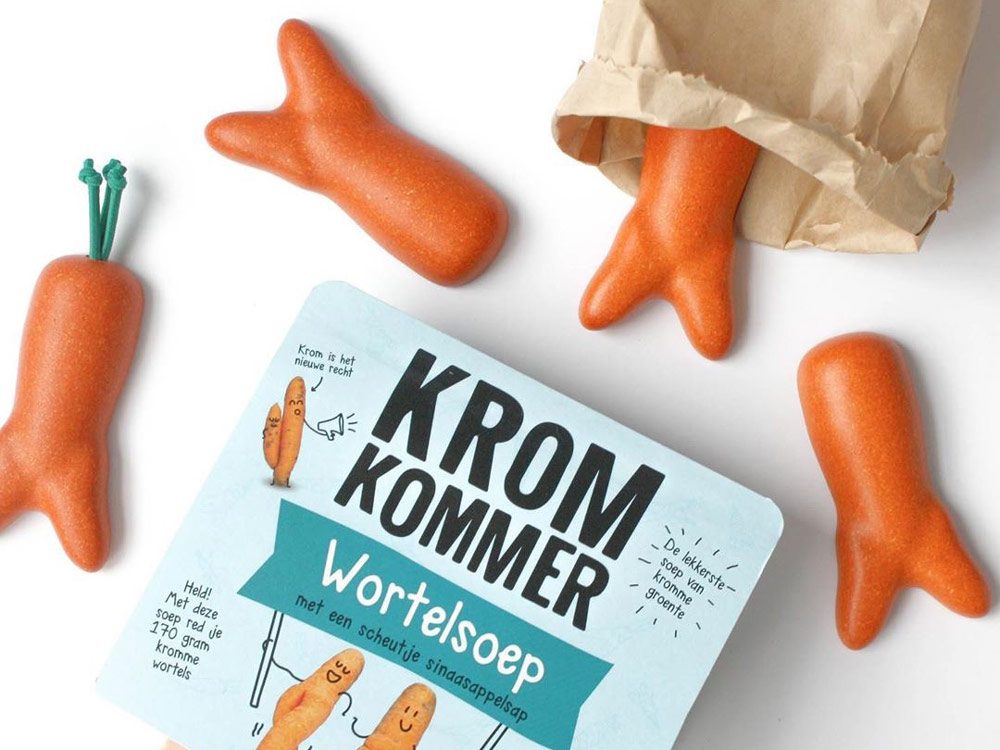 PHOTO: INSTAGRAM.COM/KROMMUNITY
PHOTO: INSTAGRAM.COM/KROMMUNITY
Learning to appreciate wonky fruit
Many fruits and vegetables go to waste because supermarkets reject them as too ugly to put on sale despite being perfectly edible and nutritious. But Dutch social enterprise Kromkommer is helping to change attitudes towards misshapen produce with a children’s toy range (pictured above) available to parents in 23 countries.
“It shows kids the beauty and diversity of wonky fruit and veggies,” says Mark Kingma, head of concept and design at Kromkommer, whose name is a play on the Dutch words for crooked and cucumber.
The bias against produce that doesn’t conform to an ideal shape stems partly from past EU legislation restricting the sale of wonky fruit and veg, even though the law was relaxed ten years ago. “Instead of ending up in the bin these wonkies should end up on someone’s plate,” says Kingma.
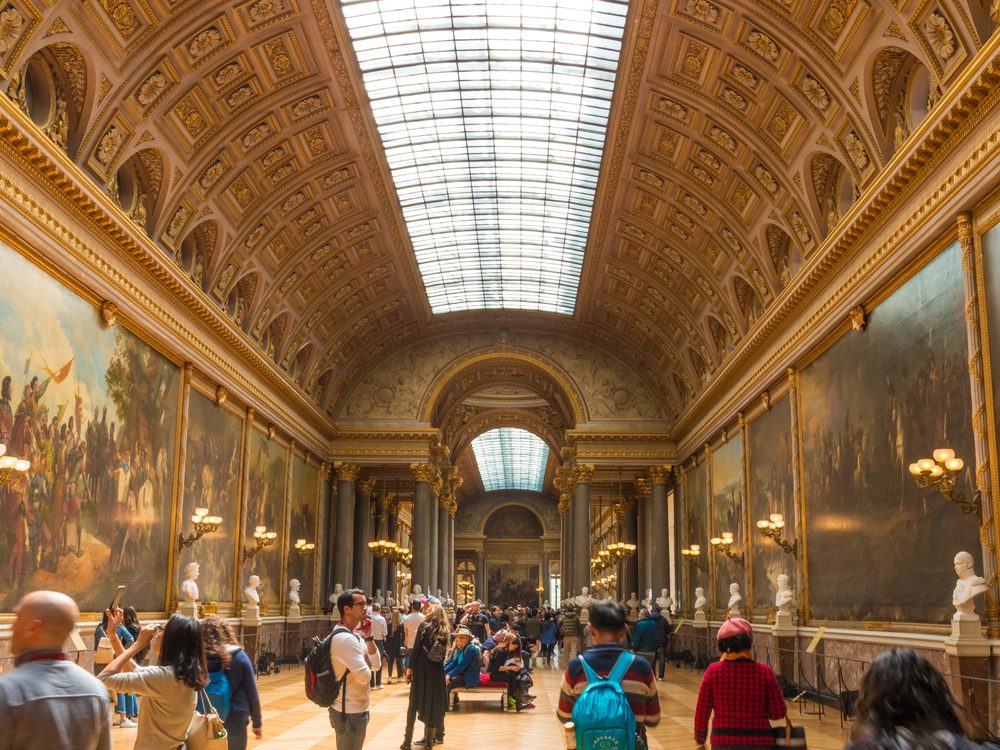 PHOTO: H-AB PHOTOGRAPHY/SHUTTERSTOCK
PHOTO: H-AB PHOTOGRAPHY/SHUTTERSTOCK
Lost Delacroix painting resurfaces in Paris
The lost study for Eugène Delacroix’s “Women of Algiers,” a masterpiece that inspired Van Gogh, Cézanne and Gauguin, has been discovered in a Paris apartment.
Missing since 1850, the work was found on a visit to a collector by gallerist Philippe Mendes, who says the study was “an essential marker in the long gestation of this mythic painting” and will be exhibited outside France.
Don’t miss these gorgeous clocks from around the world.
 PHOTO: INSTAGRAM.COM/UNIVERSOSANTI
PHOTO: INSTAGRAM.COM/UNIVERSOSANTI
Top restaurant enables disabled
A number of projects across Europe use catering to empower disabled people, but the Andalucian city of Jerez is the first to apply the concept to fine dining. All 20 employees at Universo Santi restaurant have some form of disability.
Antonio Vila, president of the charity Fondación Universo Accesible and the driving force behind the restaurant, says, “I always wanted to show what people with disabilities, given the right training, were capable of. They weren’t represented in the world of haute cuisine.”
The restaurant has attracted support from some of Spain’s leading chefs, who have contributed recipes and cooked there.
One of the staff is 23-year-old commis chef Alejandro Giménez, who has Down’s syndrome. “Working here has transformed my life,” says Giménez. “It’s given me the chance to become independent doing something I’ve loved since I was a kid.”
 PHOTO: SHUTTERSTOCK
PHOTO: SHUTTERSTOCK
Putting CO2 to good use
Scientists meeting in Germany this summer have pointed to ways of making money from some of the carbon dioxide emissions that are fuelling climate change. It’s seen as an alternative to the costly process of storing CO2 underground.
Some companies are already using CO2 captured from power plants or factories to make useful products such as fuels, polymers, fertilizers, proteins and construction materials.
Carbon 8 Aggregates, for instance, is using waste-incinerator ash destined for landfill, mixing it with water and CO2 to form artificial limestone for building blocks.
Katy Armstrong of the Carbon Utilisation Centre at Sheffield University in the U.K. says, “We need to manufacture products without increasing CO2 emissions, and if we can use waste CO2 to help make them, so much the better.”
 PHOTO: SHUTTERSTOCK
PHOTO: SHUTTERSTOCK
Mythic mammal identified
A new feline species has been found in the forests of northern Corsica. The striped, tawny-coated animal, is known as a “cat-fox” (or “ghjattu volpe” in Corsican).
“It’s a wonderful discovery,” says Pierre Benedetti of France’s National Hunting and Wildlife agency. “We believe this is a wild natural species—an extremely inconspicuous animal with nocturnal habits.”
The cat-fox had long been part of Corsican shepherds’ mythology, says agency field worker Carlu-Antone Cecchini. “They told stories of how the forest cats would attack the udders of their ewes and goats.”
Not dissimilar to a domestic cat, the ring-tailed feline measures 90 centimetres from head to tail, has very wide ears, short whiskers and “highly developed” canine teeth.
Take a look at these photos of the rarest animals on Earth.
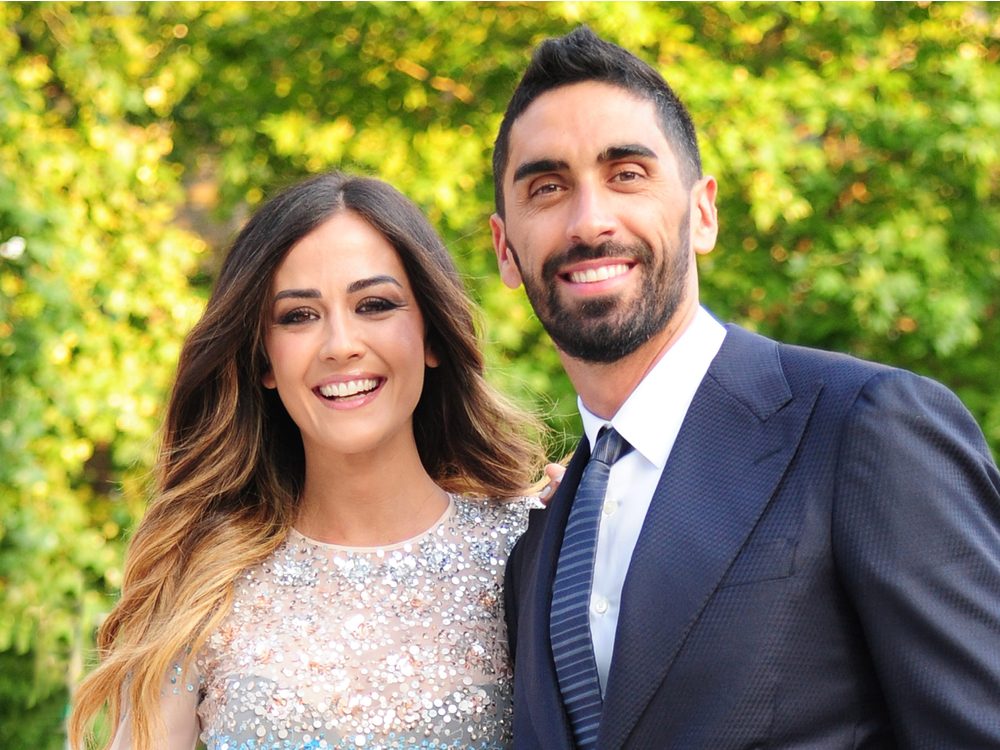 PHOTO: FREEDOMPIC/SHUTTERSTOCK
PHOTO: FREEDOMPIC/SHUTTERSTOCK
Olympian saves man from drowning
Filippo Magnini was relaxing with his girlfriend on a beach in Sardinia when he heard cries for help. Andrea Benedetto, 45, had been floating on an inflatable unicorn when he fell into the choppy water and a strong wind blew his craft away. Now he was panicking and in danger of drowning.
Magnini (pictured right), a retired Olympic swimmer and 100m freestyle champion, dived into the sea and swam out to the struggling man, then held him above the surface of the water until a rescue boat arrived.
The sportsman, who was part of Italy’s medal-winning 4x200m freestyle relay team at the 2004 Athens Olympics, said: “I just did what I had to. When I reached him he wasn’t even able to speak. He was in a lot of trouble, frightened, and had swallowed sea water.”
After first aid on the beach, Benedetto was treated in hospital.
Read about the strangers who saved two boys from a riptide in Florida.
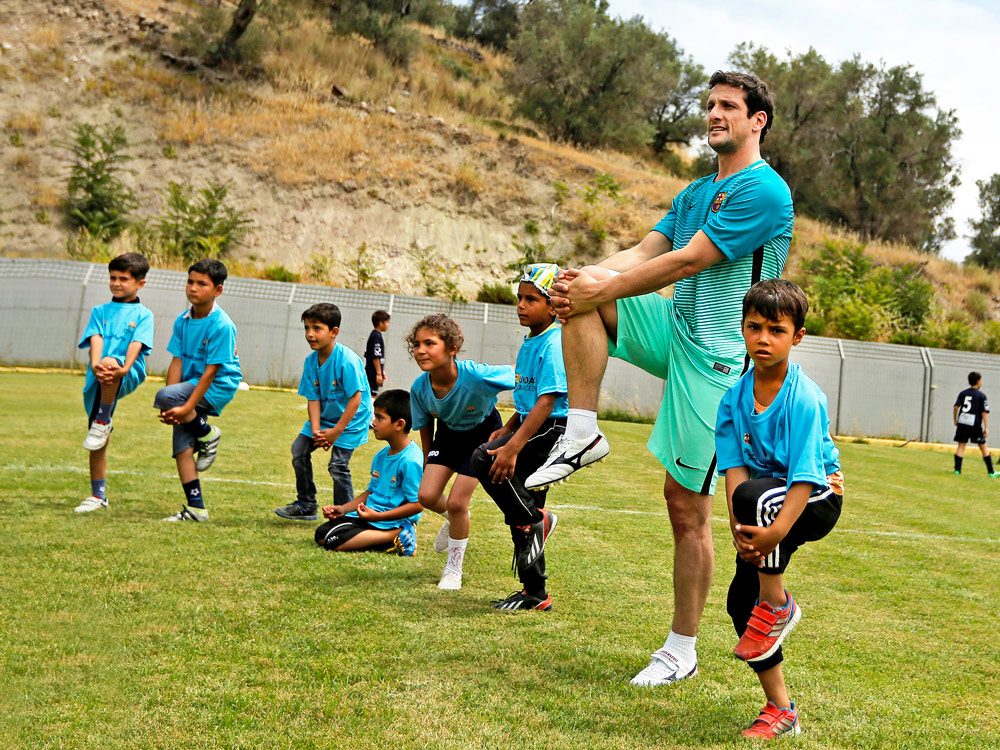 PHOTO: REUTERS/COSTAS BALTAS
PHOTO: REUTERS/COSTAS BALTAS
Barça scores goal with young refugees
Spanish footballing giant Barcelona has been supporting child refugees living in camps on the Greek island of Lesbos by organizing football training sessions. The aim is to promote dialogue and tolerance, ease stress and nurture friendships.
“We know we can help them to dream, we can show them the future,” explains Jordi Cardoner, vice president the club’s charity arm, the Barça Foundation.
Lesbos was a main gateway into Europe for thousands of refugees at the height of the migrant crisis in 2015 and 2016. Up to 15,000 refugees remain in temporary shelter on Greek islands in conditions that aid organizations describe as inhumane.
Barcelona veteran Juliano Belletti (pictured) is among the high-profile supporters of the project, which holds thrice-weekly sessions led by coaches who are refugees that have been granted asylum. “From this program the kids learn values like respect and teamwork,” says Aesa Osso, a Syrian coach.
A third of the participants are girls, including 15-year-old Baloot Ali from Pakistan. “People used to say football was only for boys,” she says. “But now there is no difference between girls and boys. We are equal.”
Find out how this Edmonton teacher is helping educate children in her native Ethiopia.
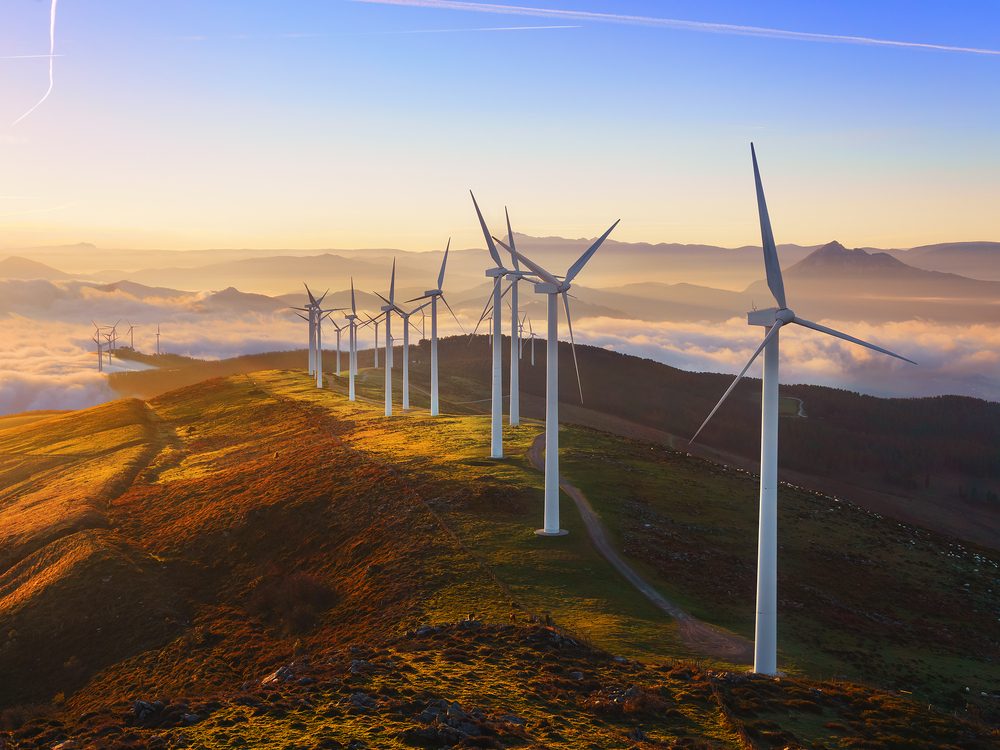 PHOTO: SHUTTERSTOCK
PHOTO: SHUTTERSTOCK
Norway’s giant wealth fund dives into renewable energy
Norway is to raid its €900 billion sovereign wealth fund to ramp up investment in wind and solar power projects. The intention is to double its existing commitment and spend more than €12.5 billion on schemes developing the clean energy needed to combat climate change.
The government’s sovereign wealth fund—the world’s largest—has announced it is selling its stake in 134 oil and gas companies that don’t have renewable energy divisions. And it says it will for the first time inject finance into renewable energy projects that are not listed on stock markets.
The news was hailed as a “historic breakthrough” by Per Kristian Sbertoli of Norwegian climate thinktank Zero. Sverre Thornes, CEO of Norwegian pension fund KLP, said: “Clean energy is what will move us away from the dangerous and devastating pathway we are currently on.”
Meet the wildlife vets saving mountain gorillas in central Africa.
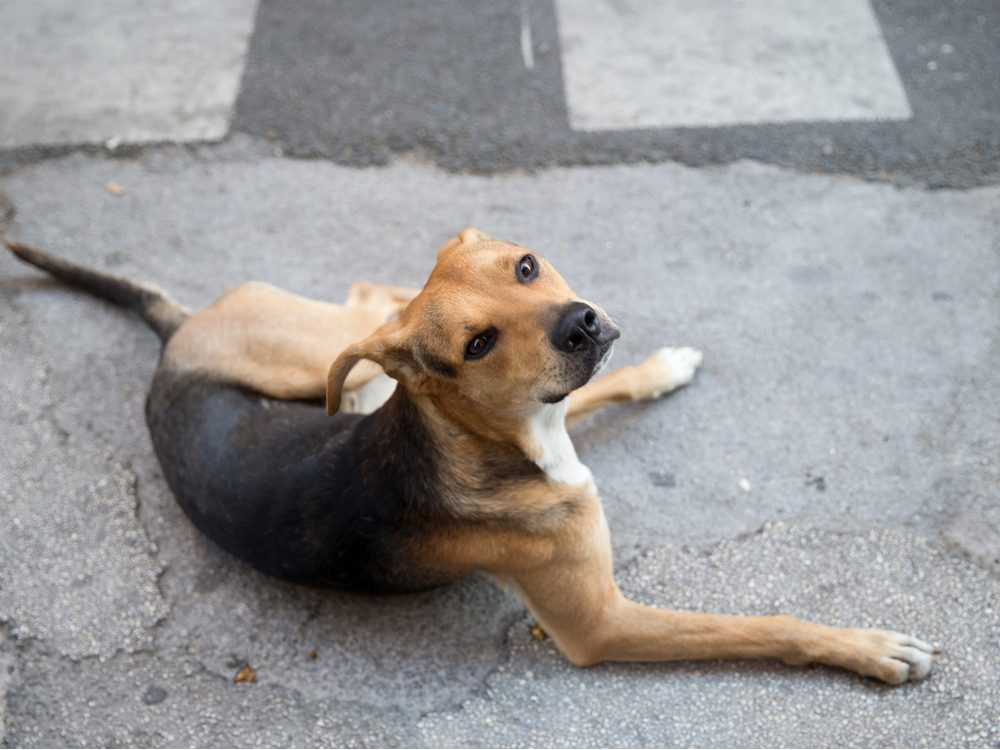 PHOTO: SHUTTERSTOCK
PHOTO: SHUTTERSTOCK
A flatpack home for Sicily’s stray dogs
As well as selling flatpack furniture, Ikea’s store in Catania, Sicily, provides an unusual service. It welcomes stray dogs off the street, feeding them and allowing them to curl up and nap among the store’s living room displays.
The practice is popular with customers, who include local shop owner Giovanna Pecorino. “I know those dogs well,” she says. “I love them. They give me a sense of peace.” The strays are cared for by a local animal welfare group and some dogs have even been adopted by customers and found a permanent home.
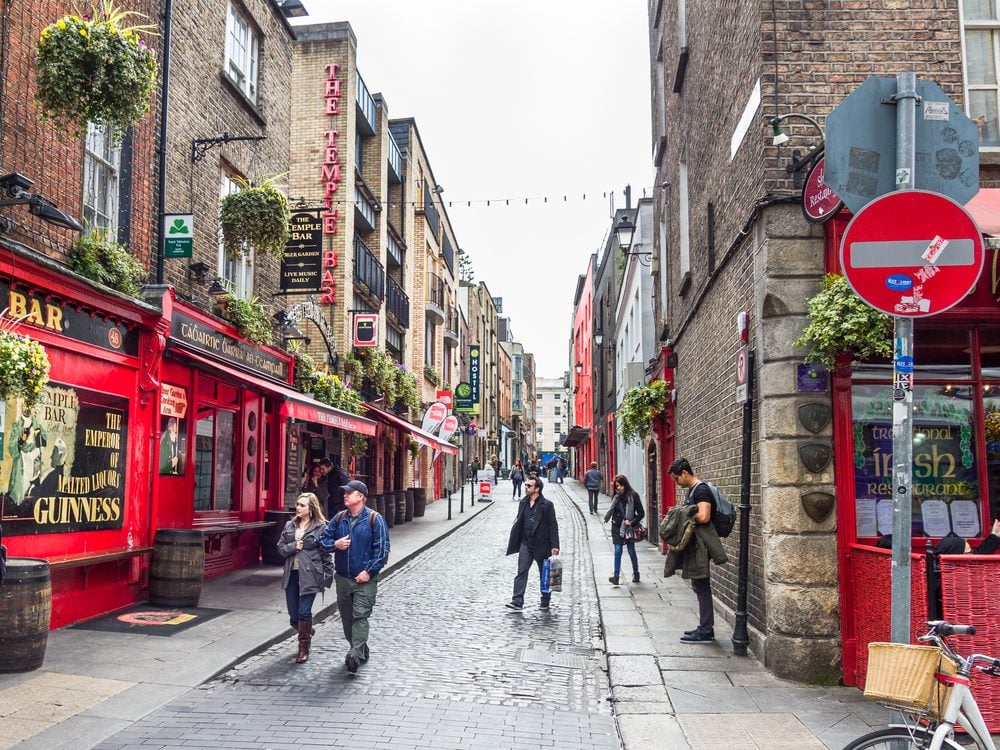 PHOTO: GIANCARLO LIGUORI/SHUTTERSTOCK
PHOTO: GIANCARLO LIGUORI/SHUTTERSTOCK
Dublin offers tourists a guide with a difference
Homeless Dubliners have a new opportunity to get off the street under a scheme that trains them as tour guides. The social enterprise My Streets Ireland aims to give some of the Irish capital’s homeless new skills and an income for showing visitors the city.
Trainees choose a theme for their tour and get help with its research and presentation. The guides receive half of the ticket sales and the remainder is ploughed back into running the project.
“I never dreamed this would happen,” says Eddie Dooner, 27, who was living in a tent in Dublin’s Phoenix Park, but now has his own flat. “I want to change people’s views. Just because you’re homeless doesn’t mean you’re a bad person.”
Similar schemes are running in other European capitals, including Berlin, Vienna and Prague.
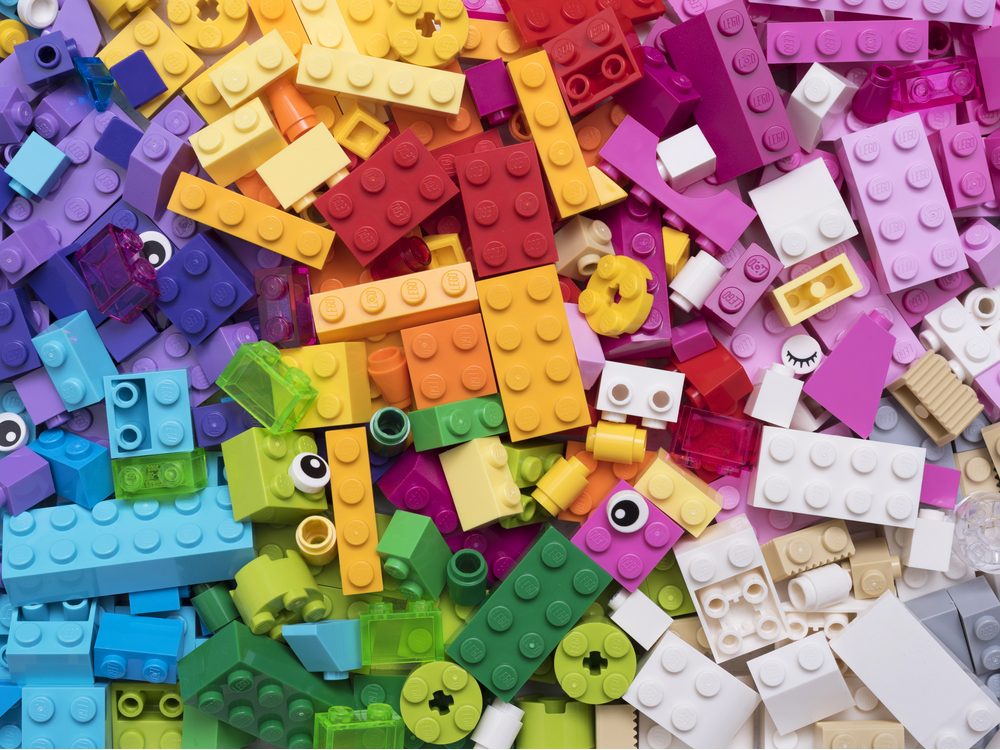 PHOTO: TWIN DESIGN/SHUTTERSTOCK
PHOTO: TWIN DESIGN/SHUTTERSTOCK
Kids learn Braille the fun way
Lego has unveiled a project to help blind and visually impaired children learn Braille in a “playful and engaging way” amid concerns that fewer children are learning the system because of audiobooks and computer programs.
Its new “Braille Bricks” will be moulded with the same studs used for letters and numbers in the Braille alphabet. They will also feature printed characters to allow sighted teachers and family to read them.
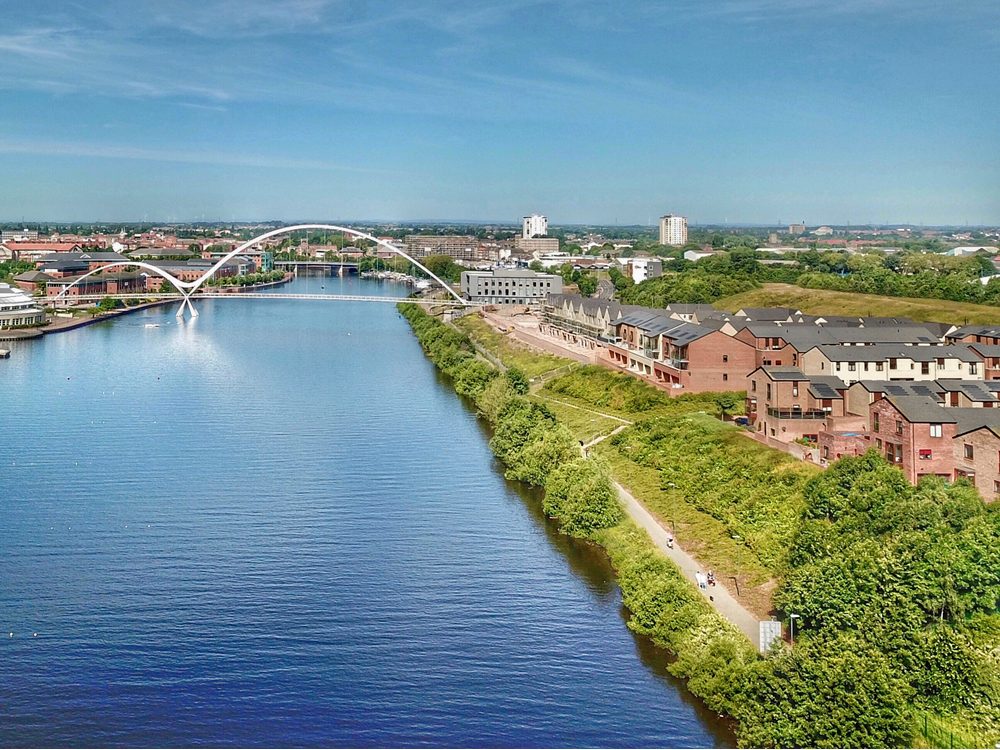 PHOTO: SHUTTERSTOCK
PHOTO: SHUTTERSTOCK
A knight of the road rides to the rescue
Father of one Dean Moore turned Good Samaritan when he spotted a distressed couple by the roadside near Stockton in northeast England. Their car had been damaged in an accident. As other motorists sped past, Dean stopped to help.
It turned out the couple, Sharleen and Ron Gillies, had been driving the 350 miles from Edinburgh to Cambridge for a last visit to Sharleen’s terminally ill mother. Now they were stranded less than halfway there. So Dean offered to drive them all the way to Cambridge—some 200 miles—for nothing.
Dean explains, “I was just trying to be a decent human, because so many people drove past.” As a result, the couple reached Sharleen’s mum in time to say their goodbyes. “I just can’t put into words what that lad did for us,” Ron Gillies says.
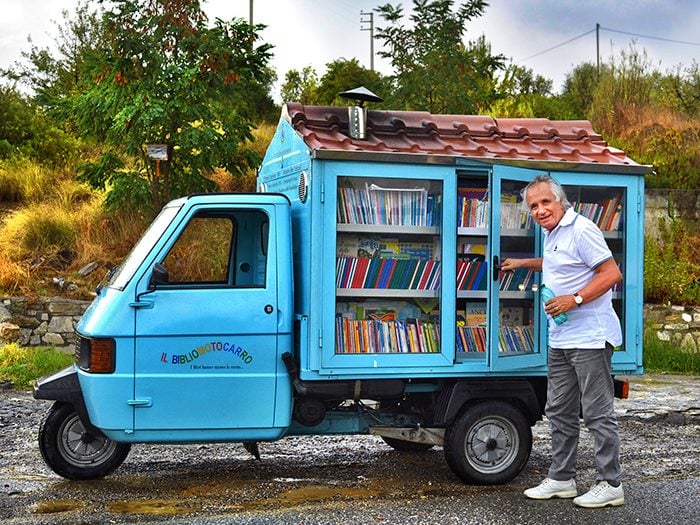 PHOTO: FABIO COCCHIA FOR THE FOTOGRAFANDO BASILICATA PROJECT
PHOTO: FABIO COCCHIA FOR THE FOTOGRAFANDO BASILICATA PROJECT
Mobile library gets rural kids reading
As a teacher in a primary school in rural Italy, Antonio La Cava (pictured above) was worried about his young pupils’ growing lack of interest in reading books. His response was to transform a three-wheeled van into a mobile library.
Now 73, he has spent nearly 20 years driving his Bibliomotocarro to bring books to children in the remote villages and communities of Basilicata, a region in Italy’s far south.
“I was worried about growing old in a country of non-readers,” he says. “Without a book, so often a child is alone.”
La Cava chose a Piaggio Ape van for its humble, homely associations, giving it a house-like roof: “As soon as you see it, it puts you in a good mood,” he says. “It suggests the idea of a refuge, of relaxation, which is what every book offers.”
Besides the library, La Cava also runs creative writing workshops and shows short films inspired by books, all of which underpins his belief that books and culture, as he puts it, are “made by and for everyone, not just a privileged few.”
 PHOTO: SHUTTERSTOCK
PHOTO: SHUTTERSTOCK
German politicians get insect-friendly
A German government minister has proposed legal protection for insects as scientists warn that plummeting numbers of the crucial invertebrates threaten a “collapse of nature.” The new law would slash pesticide use and pump money into research.
“We human beings need insects. They deserve to be protected,” says environment minister Svenja Schulze.
As well as a €100 million “action plan” for protecting insects, Germany would also introduce new controls on the use of new land for housing or road projects until 2050, and limit light emissions at night to avoid disorienting insects.
Campaigners worldwide have highlighted the risks of plunging numbers of insects, which play a vital role in pollinating plants and food crops. “We wouldn’t only be protecting stag beetles and bumblebees, but above all ourselves,” says Schulze.
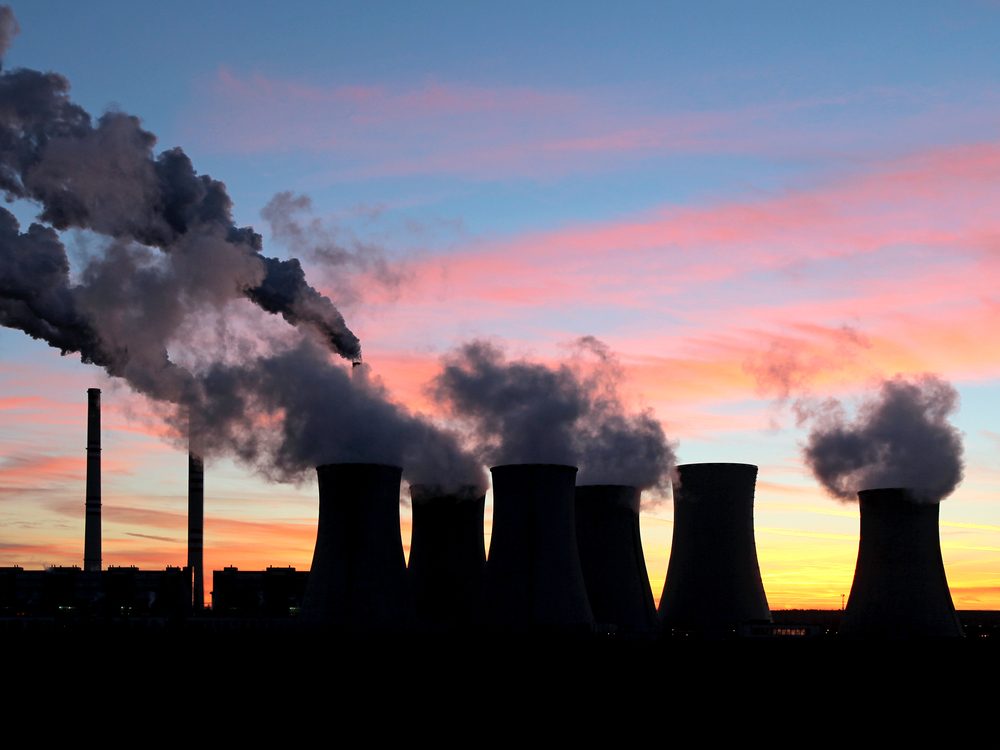 PHOTO: SHUTTERSTOCK
PHOTO: SHUTTERSTOCK
Carbon emissions decline in Europe
Carbon dioxide emissions rose 2.2 per cent globally in the decade to 2015. But 17 European countries, in a group of 18 developed economies that account for 28 per cent of global emissions, have shown a reduction over the same period. It was greatest in countries with the strongest renewable energy and energy efficiency policies.
“This is good news, but just the start,” said Corinne Le Quéré, co-author of the study published in the journal Nature Climate Change.
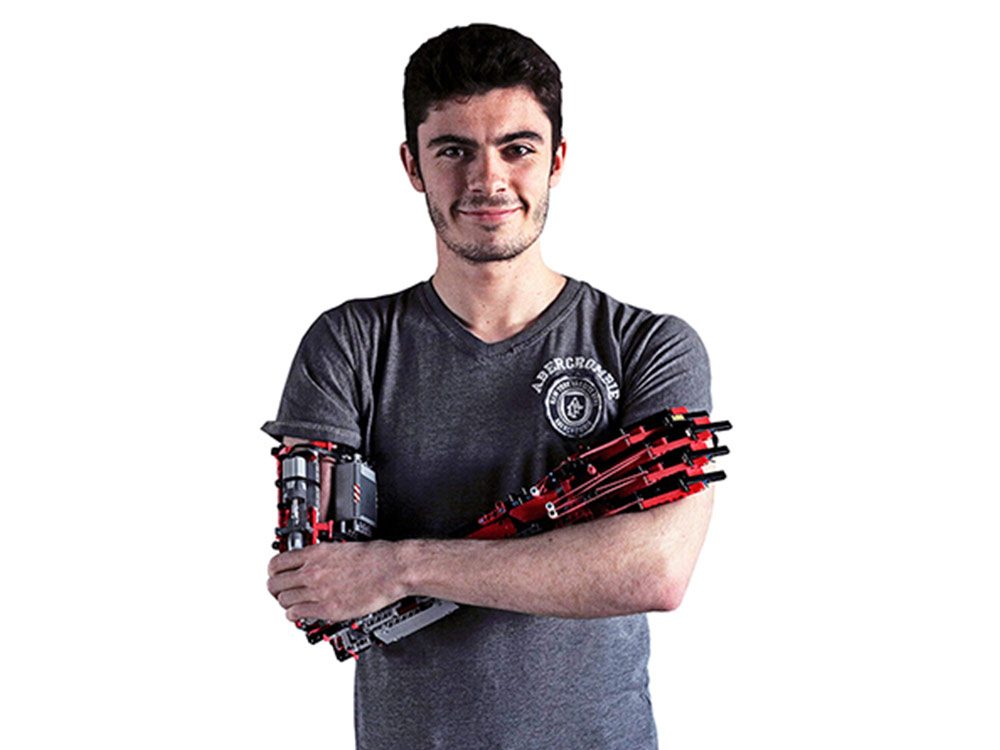 PHOTO: REUTERS/ALBERT GEA
PHOTO: REUTERS/ALBERT GEA
Teenager uses Lego to build robotic arm
David Aguilar has always loved Lego. Born without a right forearm due to a rare genetic condition, at the age of just nine he built a rudimentary artificial arm for himself using the popular plastic construction toys.
“As a child I was very nervous to be in front of other guys, because I was different,” he says, “but that didn’t stop me believing in my dreams.”
As he got older, he kept working on his prosthetic design, and now, aged 19 and studying bioengineering at university in Barcelona, he has designed a robotic arm with an electric motor inside, again using Lego pieces.
He says his aim is to show that nothing is impossible; after university, he wants to create affordable robotic limbs for people who need them. “I’d try to give them a prosthetic, even if it’s for free, to make them feel like a normal person.”
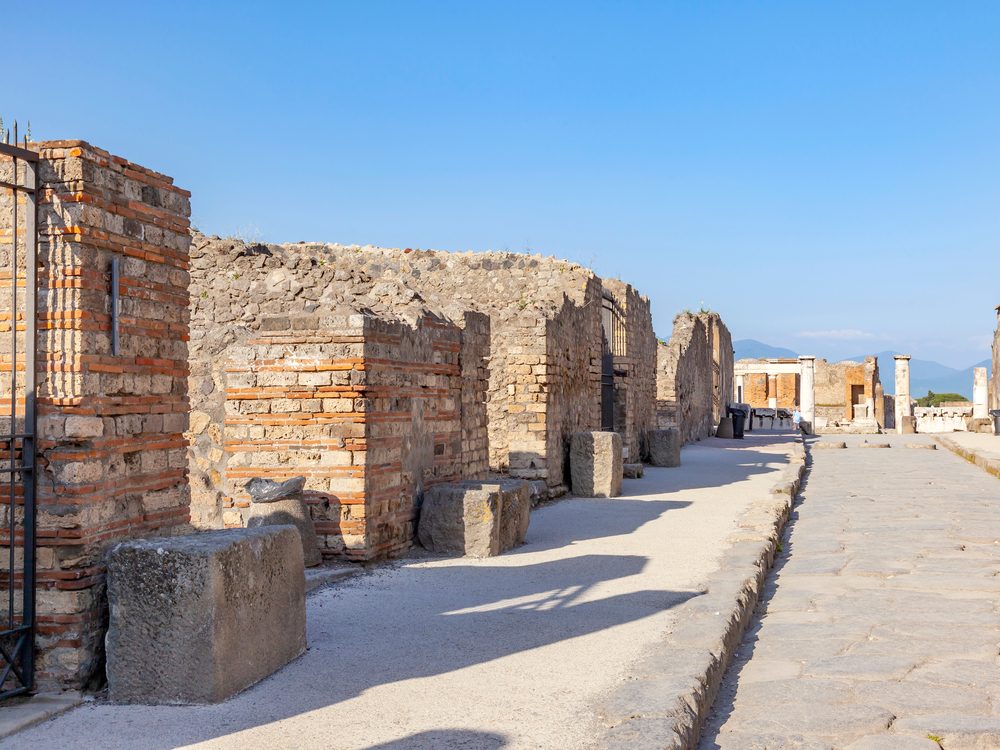 PHOTO: PPL/SHUTTERSTOCK
PHOTO: PPL/SHUTTERSTOCK
Narcissus emerges in Pompeii
Some 250 years after the ancient Roman city of Pompeii was discovered buried by volcanic ash, archaeologists are uncovering new treasures. Among them is a brilliantly preserved fresco of Narcissus, enraptured by his own reflection.
The work was found in an “elegant and sensual” bedroom of a family residence. “The extraordinary discoveries of this site continue,” Massimo Osanna, director of Parco Archeologico di Pompei said.
Check out the weirdest discoveries archaeologists have made.
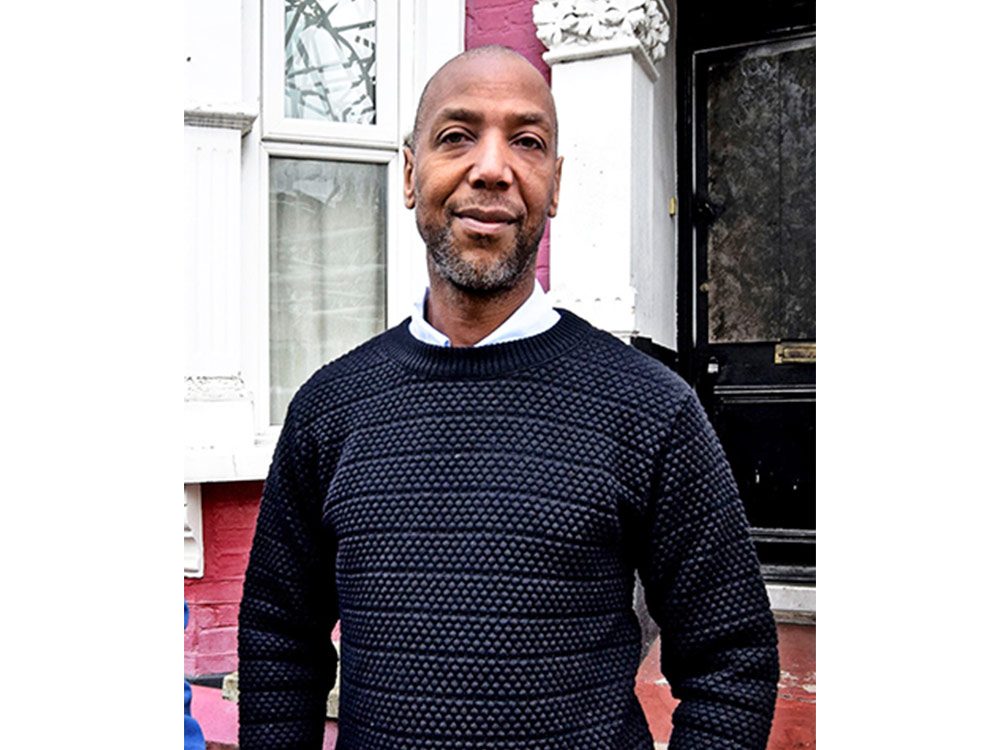 PHOTO: POLLYHANCOCK.CO.UK
PHOTO: POLLYHANCOCK.CO.UK
Nearly naked man rescues neighbour from blaze
Four in the morning and Keith Charles was fast asleep in bed at home in Stoke Newington, north London, when he was woken by his teenage son screaming. The terrace home of his elderly neighbour, Mrs. Brown, was engulfed in flames and the 85-year-old was trapped inside, banging desperately on her front windows.
“I saw the flames and instinct took over,” says Charles. Wearing only his pants, he dashed across the street, kicked in the front door, battled through the flames and carried his neighbour outside to safety. By the time firefighters arrived, Mrs. Brown was safe. “She says I saved her life, but when you see someone in trouble it’s just human instinct to help,” says Charles. “It was probably a bit stupid, but I’d never have forgiven myself if I hadn’t tried to help.”
 PHOTO: SHUTTERSTOCK
PHOTO: SHUTTERSTOCK
Kind builder picks up the pieces
When a “cowboy” tradesman duped Sarah Ibbotson, she was left feeling shattered and helpless. The terminally ill mother of one from York, England, who has Ehlers-Danlos syndrome and needs to use a wheelchair, had paid £41,000 for modifications to her home. But the builder she employed took her money and left the work unfinished.
Ibbotson turned to builder Roy Allen, who was shocked at the state of the house when he arrived to quote for repairs. “I’ve honestly never seen anything like it,” he says. Allen was so shocked that he and his crew did the work for free, refitting doors and windows, and mending the central heating. “I felt so sorry for her. I wanted to do what I could to help,” he says. Says Ibbotson: “I’ve been through hell… There are not enough words to say how grateful I am.”
 PHOTO: PRADEEP THOMAS THUNDIYIL/SHUTTERSTOCK
PHOTO: PRADEEP THOMAS THUNDIYIL/SHUTTERSTOCK
Thousands of baby eels rescued at airport
Customs officers released 5,000 baby eels into River Rhine after discovering them inside checked luggage at Frankfurt Airport. The tiny elvers were bound for Vietnam.
Eels are regarded as a virility-enhancing delicacy in Asia, where a kilo of the slippery anguillidae can fetch between €3,000 and €5,000. The elvers were found in water-filled bags inside a Malaysian woman’s suitcase.
Customs spokesman Hans-Jürgen Schmidt said the eels “clearly enjoyed being returned to their element.”
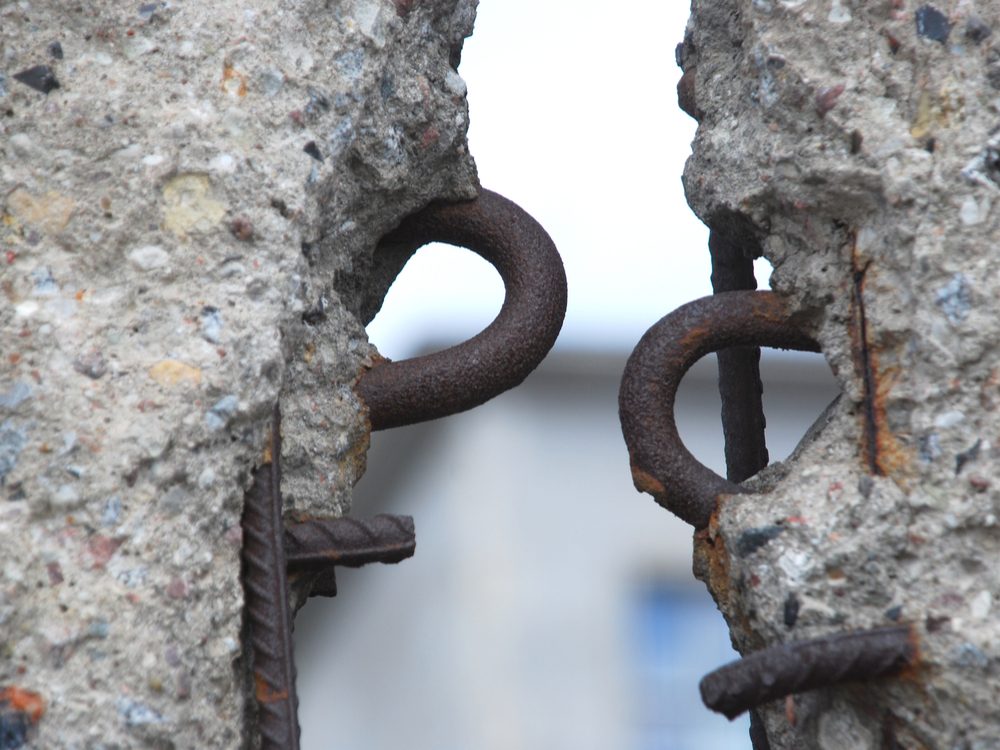 PHOTO: SHUTTERSTOCK
PHOTO: SHUTTERSTOCK
Berlin Wall wins protection
As the 30th anniversary of the fall of the Berlin Wall approaches, the future of the longest remaining section of the wall that became a symbol of the Cold War has been secured.
The 1.3 kilometre-long East Side Gallery, near the centre of the city on Mühlenstraße, had faced the possibility of demolition because of a construction boom in the area. But the Berlin Wall Foundation, which runs other memorials and museums in the city, has now taken control of what’s known as “the world’s longest open-air gallery.”
This stretch of wall was transformed after 1989 when 118 artists were invited to paint on its concrete surface. Their paintings express the euphoria and tremendous hopes for a better, freer future. One of the murals, by Russian painter Dmitri Vrubel, depicts a kiss between Soviet leader Leonid Brezhnev and East German leader Erich Honecker.
The East Side Gallery is one of the city’s most visited landmarks. Foundation director Axel Klausmeier describes it as “a symbol of joy.”
Don’t miss what these famous landmarks look like zoomed out!
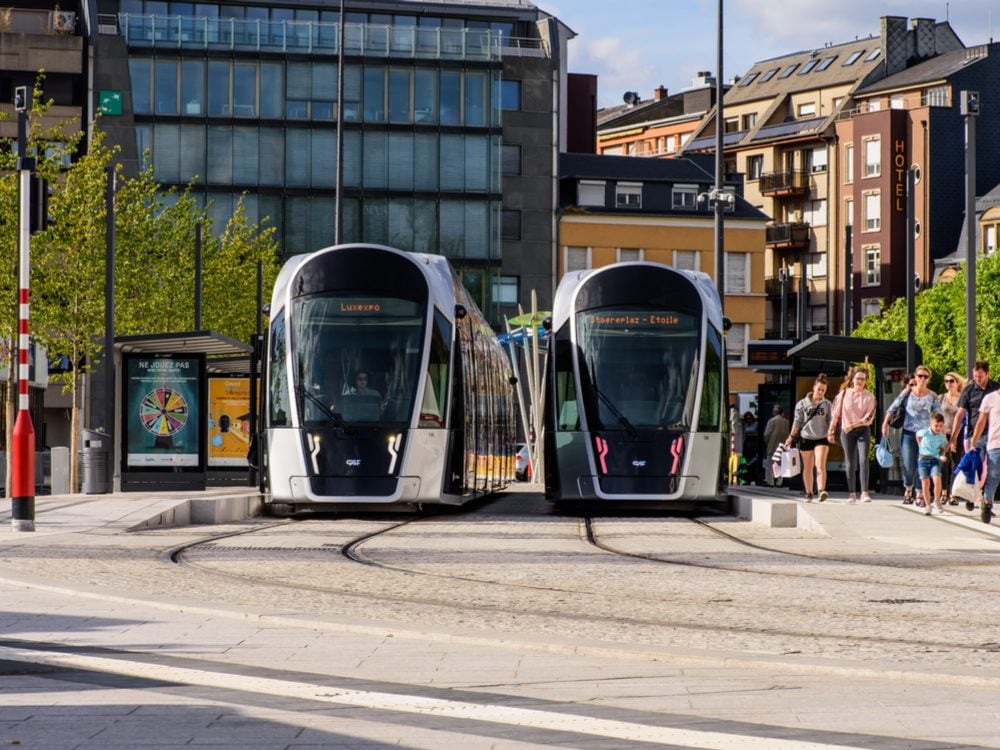 PHOTO: CIW1/SHUTTERSTOCK
PHOTO: CIW1/SHUTTERSTOCK
Luxembourg to make public transport free
Luxembourg intends toe become the first country in the world to scrap fares on all public transport, in a move aimed at alleviating its chronically bad traffic congestion. Luxembourg City has 110,000 inhabitants, but a further 400,000 people commute into the city to work. The initiative is set to take effect in March 2020.
Check out these unusual modes of transportation from around the world.
 PHOTO: SHUTTERSTOCK
PHOTO: SHUTTERSTOCK
Estonia creates its sixth national park
Almost a century after the idea was first mooted by botanist and conservationist Gustav Vilbaste, Estonia has established a new national park—the country’s sixth.
The Alutaguse spans more than 43,000 hectares in Northeast Estonia, taking in a remarkable diversity of habitats—including the country’s largest area of swamp and dense coniferous forest, its longest sand beach and numerous lakes.
It is an important habitat for many notable species such as golden eagles, brown bears (right), nocturnal flying squirrels and the endangered willow grouse. Environment minister Siim Kiisler describes the park as “a beautiful gift to all of Estonia.”
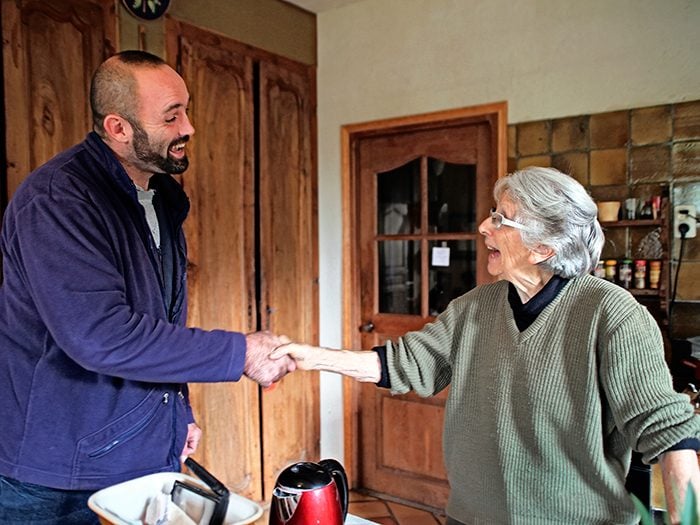 PHOTO: © ELISABETH BLANCHET; ERIC ISSELEE/SHUTTERSTOCK
PHOTO: © ELISABETH BLANCHET; ERIC ISSELEE/SHUTTERSTOCK
French post workers help the elderly
“It’s lovely to see the postman as I don’t usually see anyone else all week,” says 81-year-old Janine. She’s enjoying a French postal service initiative that’s helping elderly people living in isolation far from relatives.
Under the scheme, called “Watch over my parents” (Veiller sur mes parents), families can pay from €20 a month for postmen and postwomen to check on their parents during morning rounds. The home visits can be weekly or more frequent with reports delivered back to the family. Additional services such as a 24-hour helpline and alert system are available.
Janine lives in the Vaucluse region of southern France: her husband died years ago, and her daughters live 600 kilometres away in Paris. “They worry that I’m on my own in the middle of nowhere,” she says. Visited by postman Nicolas Dezeure, she relishes their 15-minute Monday morning chats in her kitchen.
“She knows loads about me!” says Dezeure, who messages Janine’s daughters after his visits.
“People are living longer,” observes Eric Baudrillard, head of new strategy at the French postal service. “More want to stay in their own homes for as long as they can.”
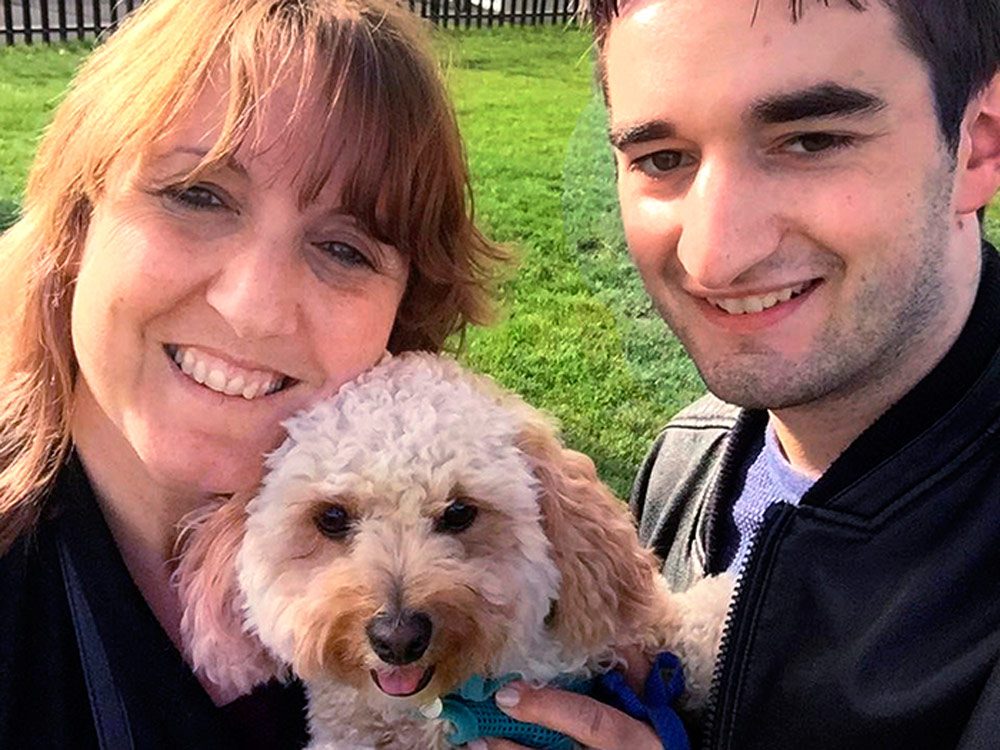 PHOTO: COURTESY OF GILLIAN ASSOR
PHOTO: COURTESY OF GILLIAN ASSOR
Forging a bond of love
One spring day, Gillian Assor was walking home with her dog past a railway bridge outside London when she heard strange noises. A man was on the bridge, crying hysterically.
“I could see he was in a really bad state,” says Gillian. She persuaded him to sit with her and talk about his troubles. The suicidal young man was called Tommy and just 23 years old. She convinced him to call his parents, waited until they arrived and then quietly slipped away.
Months later, Gillian discovered Tommy was appealing online for help in finding the mystery woman who had helped save his life. She got in touch and when they met he flung his arms around her, telling her, “You saved my life.” The two are now firm friends. “It is the most overwhelming feeling,” says Gillian. “The bond is there and it’s unbelievable.”
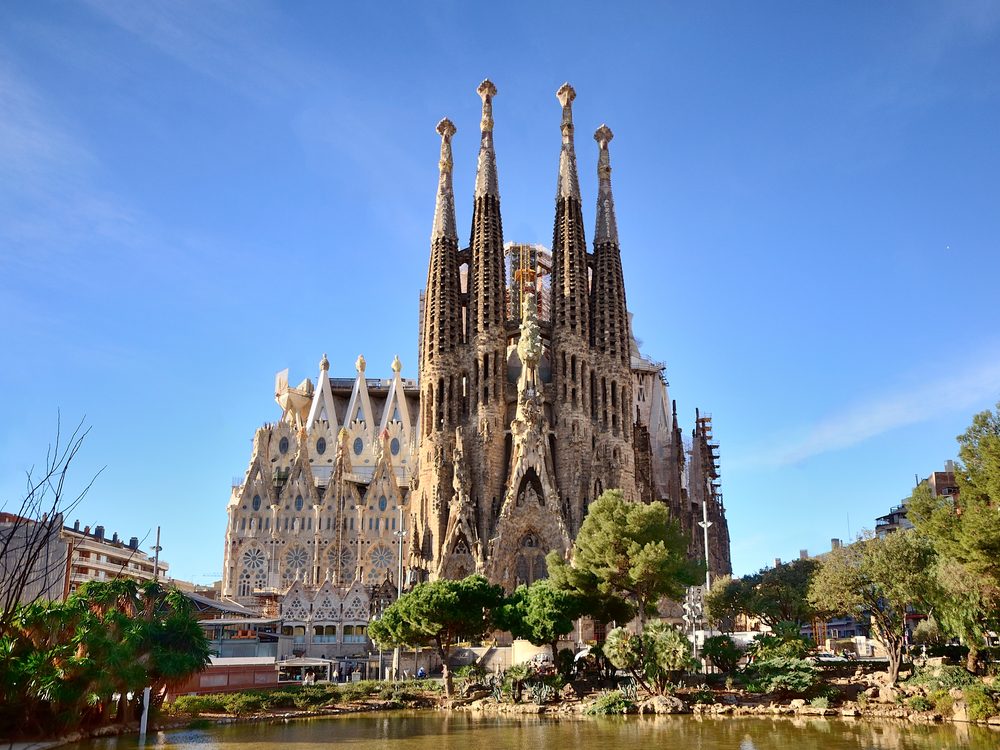 PHOTO: RODRIGO GARRIDO/SHUTTERSTOCK
PHOTO: RODRIGO GARRIDO/SHUTTERSTOCK
Official blessing for Sagrada
Some 136 years after construction began, Barcelona’s famous Sagrada Familia basilica is finally to get a building permit.
City officials say that legendary architect Antoni Gaudí’s unfinished masterpiece lacked the proper paperwork. To settle the dispute, the Sagrada’s trustees have agreed to pay 36 million euros over 10 years: the money will go towards improving public transport and nearby streets.
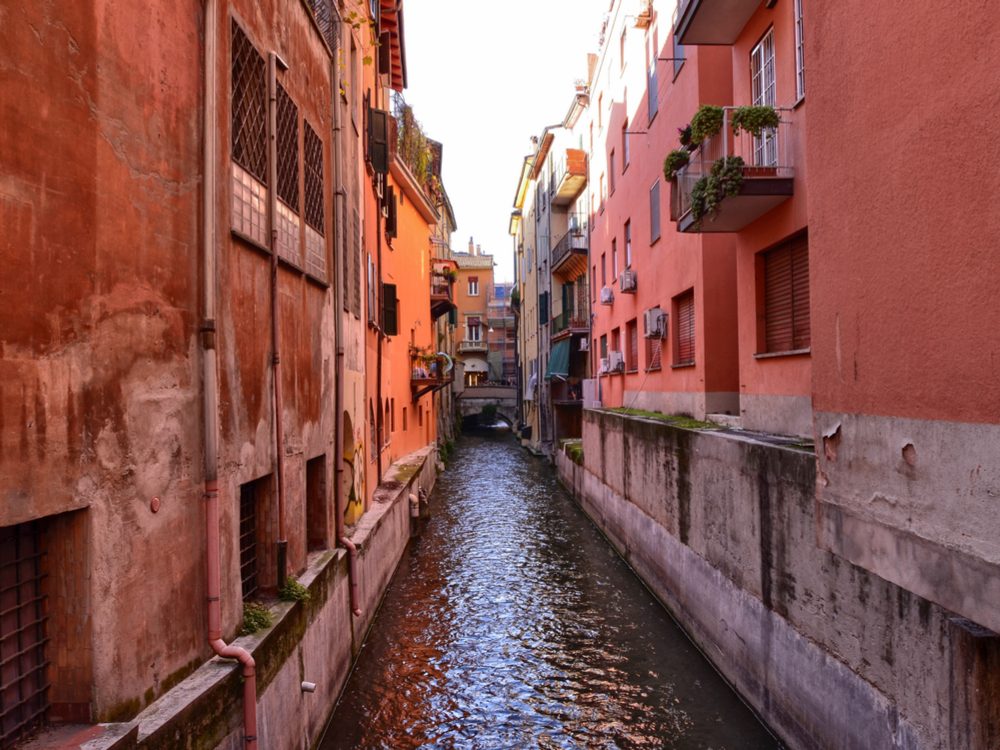 PHOTO: MASSIMO PARISI/SHUTTERSTOCK
PHOTO: MASSIMO PARISI/SHUTTERSTOCK
Points mean prizes
An anti-pollution initiative in the Italian city of Bologna is rewarding people who get out of their car and cycle or take public transport instead.
Participants use an app on their phone to log sustainable trips, earning points they can redeem against the likes of beer, ice cream and cinema tickets. The app shows users how much CO2 they’ve saved after each journey.
The Bella Mossa (Good Job) scheme is the idea of urban planner Marco Amodori. “Everybody will have the chance to get some discount for their good behaviour,” he says. Amodori has persuaded more than 100 businesses to sign up to give away discount vouchers, and some 10,000 people used the app last year.
These facts about plastic will make you go green!
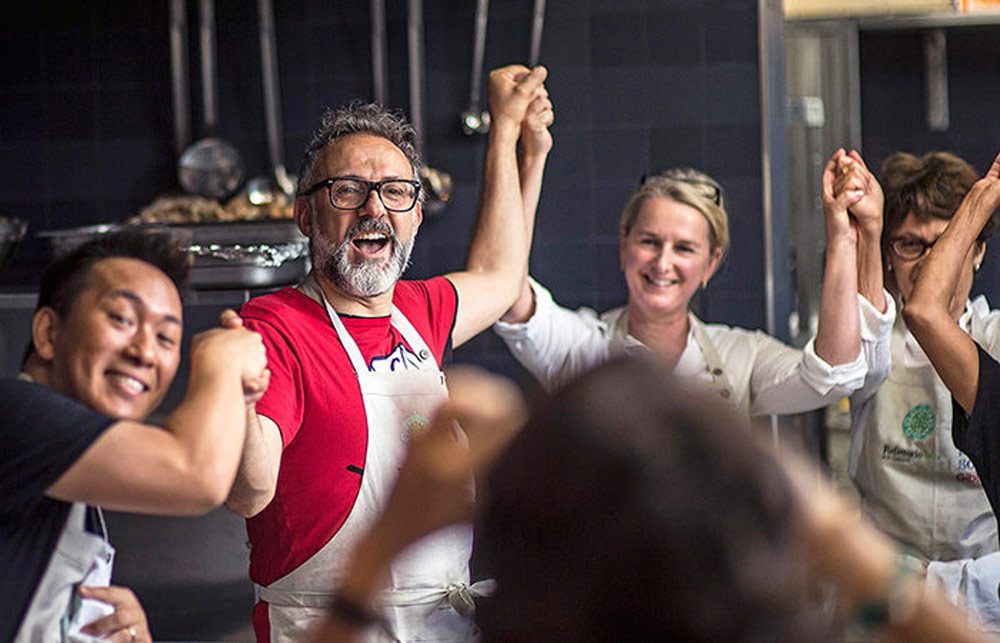 PHOTO: COURTESY OF FOOD FOR SOUL
PHOTO: COURTESY OF FOOD FOR SOUL
Cooking with love
Massimo Bottura is no stranger to accolades. Last year, his three-Michelin-starred Osteria Francescana in Modena, Italy, was named the world’s best restaurant. But he’s more than simply a brilliant chef.
Three years ago, the 55-year-old restaurateur’s concern over food waste and homelessness inspired him to open a pop-up kitchen in an impoverished district of Milan, where he and fellow chefs used 13,000kg of scraps from markets to create 10,000 free, nutritious meals for the poor.
“We need to do much more when a billion people go hungry, while 33 per cent of the world’s food supply is wasted,” explains Bottura.
The success of that first Milan pop-up led him to found a non-profit organisation, Food For Soul, and to start permanent community kitchens, or refettorios, serving free meals to the poor and homeless. The first was in Milan, followed by Rio de Janeiro, London and Paris. The latest refettorio is in Naples.
“Cooking is hard work. But it is also an act of love,” says Bottura. “When you cook for the underprivileged, you put in more love.”
These are the everyday items that take the longest to decompose.
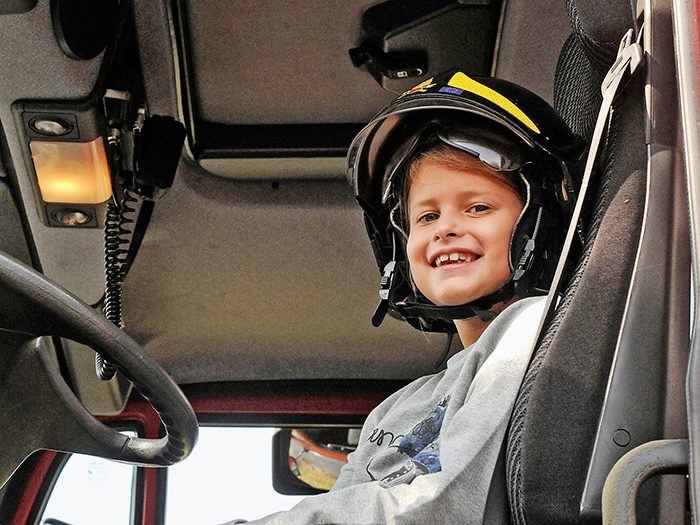 PHOTO: DIENNE
PHOTO: DIENNE
Irene saves the day
The car was nose down in the canal and rapidly filling with water and mud. “Mum, are we dying?“ eight-year-old Irene asked her mother.
Moments before, Giorgia Maron had strapped her eight-year-old daughter into her car’s child seat preparing to drive her to school. She left the car briefly when, to her horror, it began rolling towards the canal that runs by their home in a village near Legnago, Italy.
Desperately, she jumped back into the car as it entered the water to unfasten her daughter’s seat belt to help her escape. But by then water pressure meant that she was unable to open the door. She tried to smash a window using her feet, without success.
Quick as a flash, Irene had a better idea. She saw the car’s electric window button and fell upon it. It still worked and both mother and daughter were able to escape the sinking car through the open window. “I wasn’t afraid, just a bit frightened,” said Irene later.
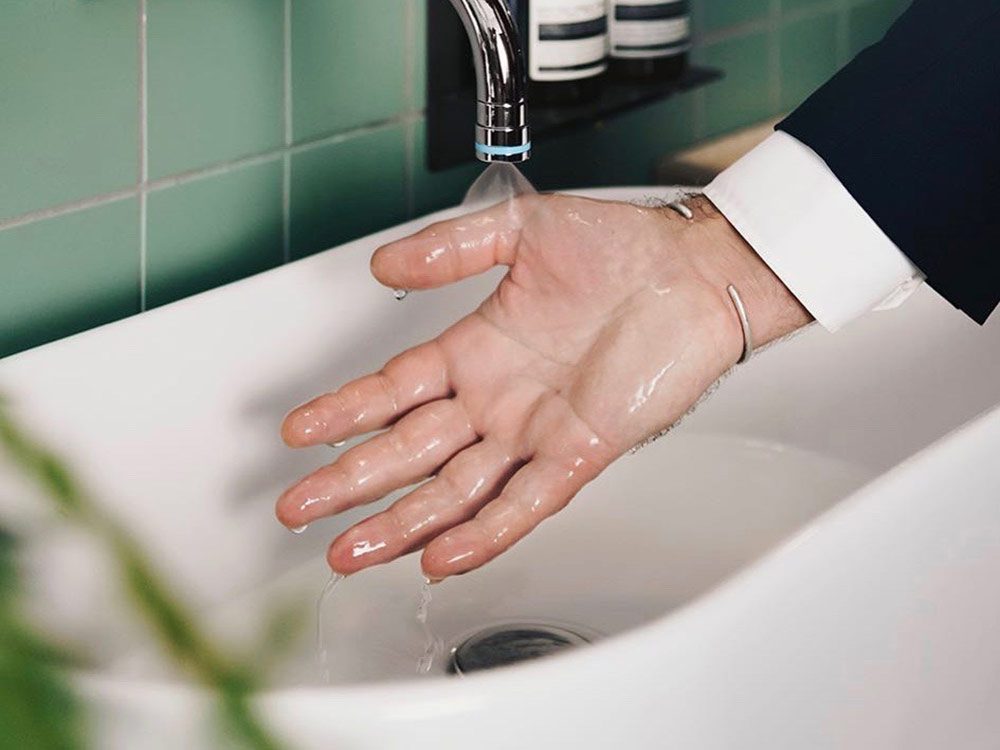 PHOTO: INSTAGRAM.COM/ALTEREDCOMPANY
PHOTO: INSTAGRAM.COM/ALTEREDCOMPANY
Slashing water use
A Swedish startup has invented a nozzle for taps that could dramatically cut household water use. Altered’s Dual Flow gadget fits on to existing taps to atomise water into a mist of millions of droplets, reducing the flow of water by 98 per cent.
“From an ordinary tap, as much as 10 to 12 litres of water run out every minute,” says Kaj Mickos, who developed the device with his son-in-law, Johan Nihlén. “But only a small part of that touches your hands or rinses off the plate.”
Altered’s nozzle can also be adjusted to create a steady stream, though still at a reduced flow rate of 85 per cent compared to standard taps.
“The most important thing to us is to make a difference to the serious water situation in the world today,” says Johan Nihlén.
A single load of laundry causes major water pollution—but this Canadian might have a solution.
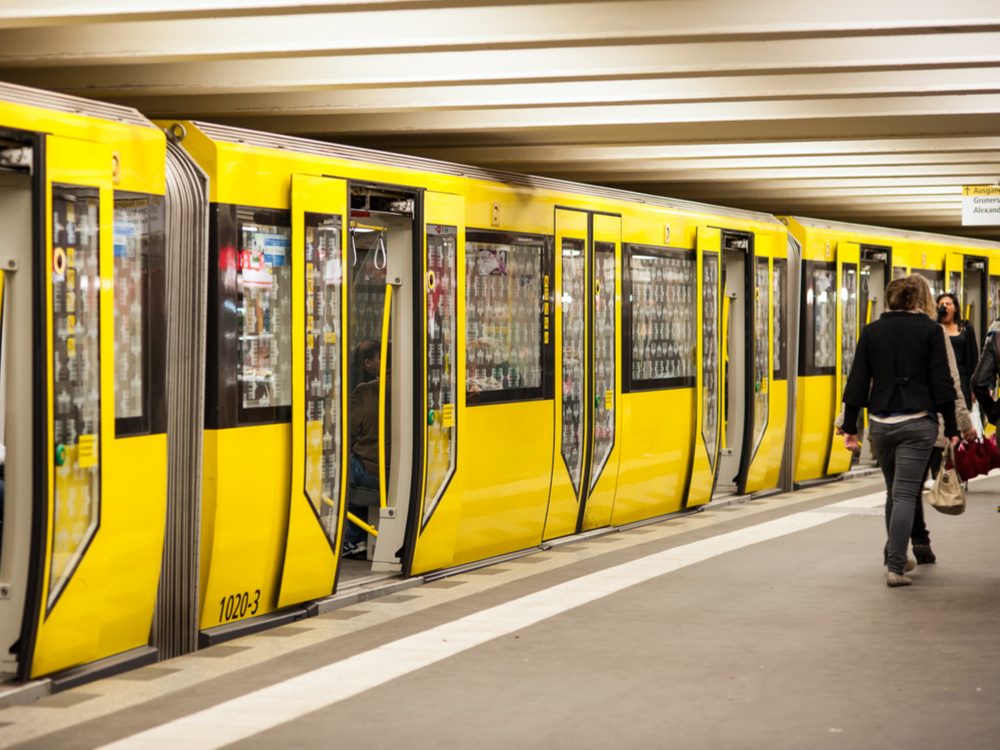 PHOTO: PIO3/SHUTTERSTOCK
PHOTO: PIO3/SHUTTERSTOCK
Tram that drives itself
Europe’s first self-driving tram has been successfully trialled on a six kilometre route in Potsdam, Germany. The autonomous Combino tram, looks like any other tram but uses radar, laser technology and camera sensors as multiple virtual eyes to view oncoming traffic.
Travelling at up to the track maximum of 50km per hour, it can respond to hazards up to 100 metres ahead faster than a human.
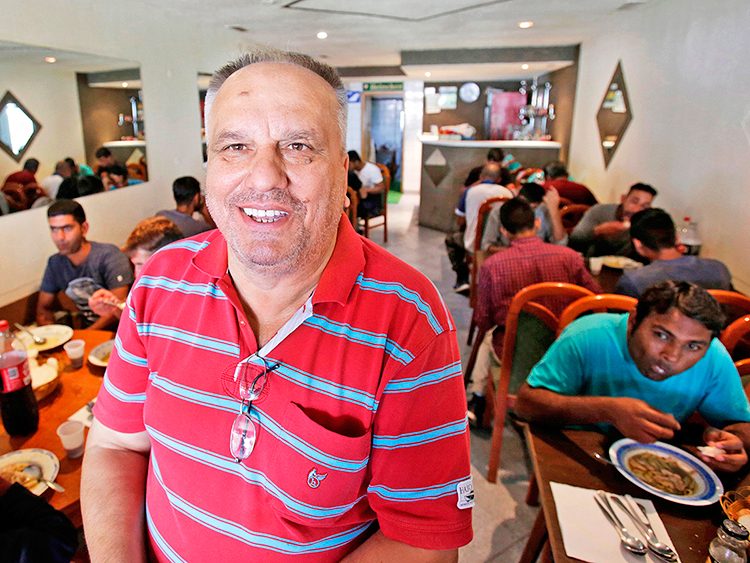 PHOTO: AMEL EMRIC/AP/SHUTTERSTOCK
PHOTO: AMEL EMRIC/AP/SHUTTERSTOCK
Cafe owner feeds hungry migrants
The former war-torn Bosnia has become the latest thoroughfare on the European migration route and has struggled to cope with the arrival of thousands of migrants and refugees en route to Croatia.
Not all the locals are happy about their uninvited guests, but Asim Latić, a café owner in the border town of Velika Kladua, responded straight from the heart. “I saw a man standing in the street. I asked if he was hungry and he said he didn’t have any money. I said it didn’t matter and fed him.”
The next day more people came and before long Latić’s café had become a kitchen for migrants. He and three friends served thousands of free meals, funding them from their own pockets for two months. “We are all war veterans. We know what it means to be hungry,” says Latić.
Here’s why greeting Syrian refugees with parkas is the ultimate Canadian act.
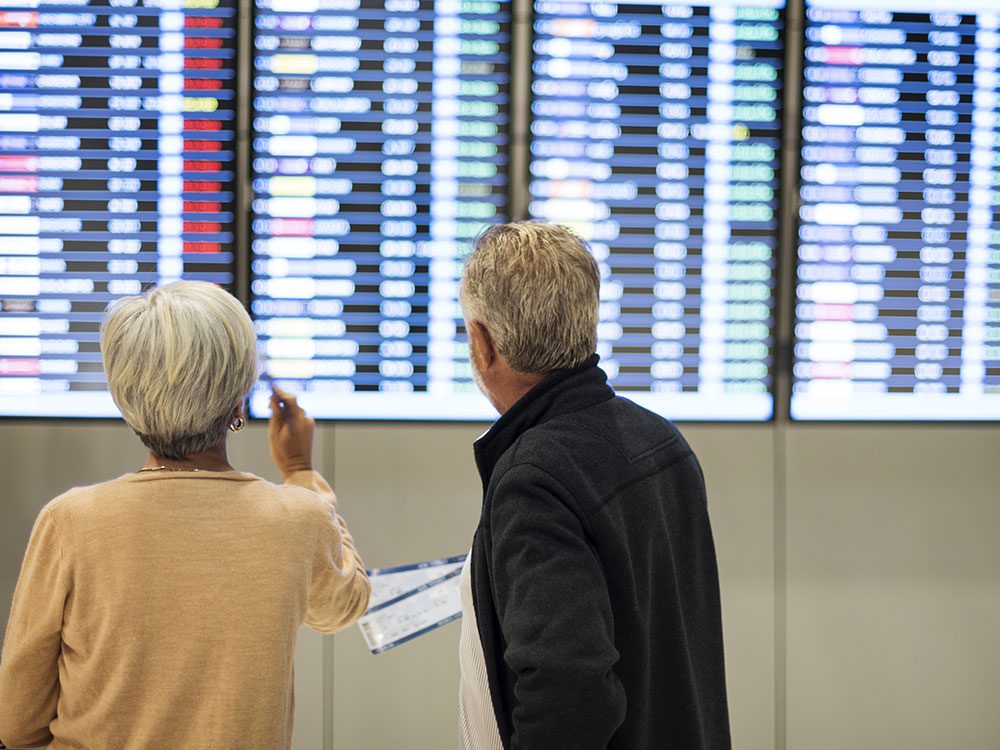 PHOTO: SHUTTERSTOCK
PHOTO: SHUTTERSTOCK
A holiday prescription
Holidays can help us to live longer, according to a 40-year study by Helsinki University researchers.
They followed 1,200 businessmen considered at risk of heart disease due to weight, high blood pressure or high cholesterol. Those who took less than three weeks off work a year were 37% more likely to die young than those who gave greater priority to their holiday time.
Here are 15 natural wonders you’ve never heard of.
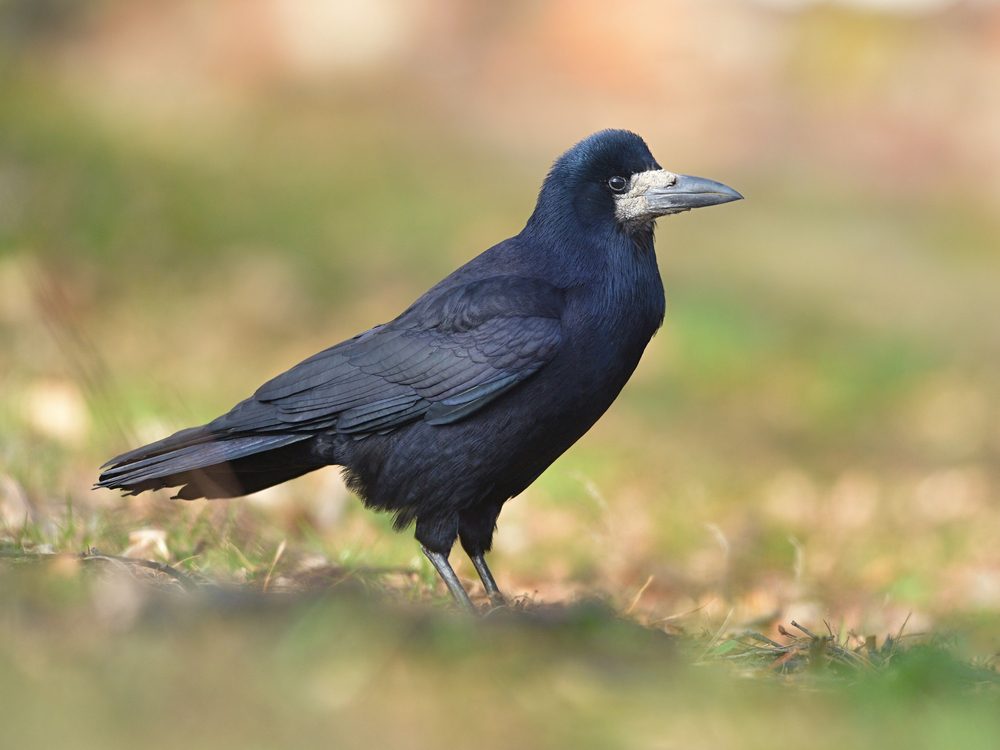 PHOTO: SHUTTERSTOCK
PHOTO: SHUTTERSTOCK
Litter-picking crows
A historical theme park in France has enlisted some unlikely help in clearing up litter left by visitors: six rooks.
The Puy du Fou park in the Vendée region has trained the birds to pick up litter by installing a small box that delivers a nugget of food each time one of the birds deposits a cigarette butt or small piece of rubbish.
“The goal is not just to clear up, but also to show that nature itself can teach us to take care of the environment”, says Nicolas de Villiers, president of the park, which receives two million visitors a year.
De Villiers says the birds are “very fast” and can fill a box in less than 45 minutes. “We want to educate people not to throw their garbage on the ground,” he says. “Sometimes it’s good to make people feel a little bit guilty.”
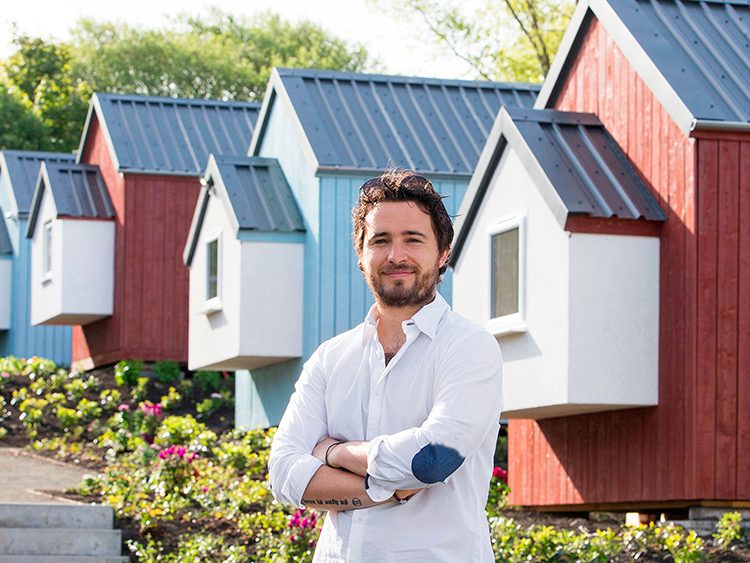 PHOTO: JEFF HOLMES/SHUTTERSTOCK
PHOTO: JEFF HOLMES/SHUTTERSTOCK
Homes for the homeless
A village providing housing for homeless people has been established on vacant land in the Scottish capital, Edinburgh. Its principal sponsor is the social enterprise Social Bite, a café chain that employs homeless people and provides free food to rough sleepers.
Made up of 11 two-bed houses, the village provides a community approach to homelessness. It aims to rehabilitate residents in a safe, supported environment, with full-time support staff to help with training and work placements.
“People living in the village would otherwise be in a B&B, hostel or on the street—very isolated environments,” says Social Bite co-founder Josh Littlejohn.
The village has a centre where residents can socialise, as well as a communal eating area and kitchen. Social Bite team member Sonny Murray, himself once homeless, says, “It’s going to be amazing because people will have support and work opportunities and a wee bit of life.”
The intention is that residents will stay for around 12-16 months before moving into permanent housing.
These heartwarming stories will restore your faith in humanity.
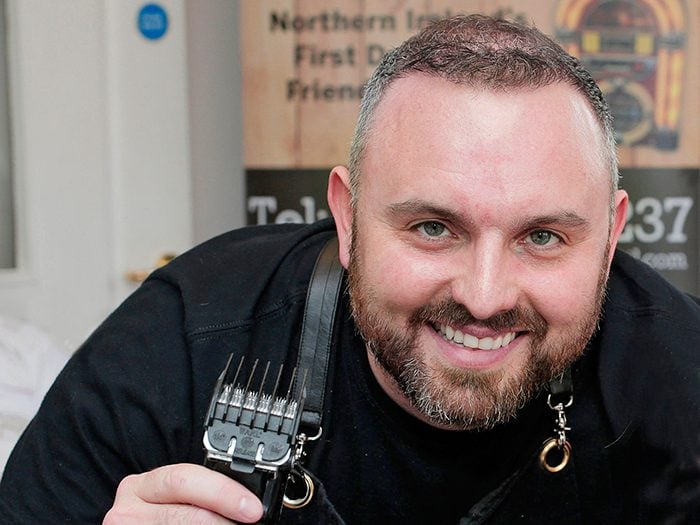 PHOTO: COURTESY OF LENNYTHEMOBILEBARBER.CO.UK
PHOTO: COURTESY OF LENNYTHEMOBILEBARBER.CO.UK
A haircut with a difference
Lenny White had been a successful marketing consultant in Northern Ireland for 17 years, but he missed the job satisfaction he’d got working as a kitchen porter in nursing homes when he was a teenager. “I never forgot how it made me feel and the interaction with residents,” says White.
And that was his inspiration to give up marketing and retrain as a barber for dementia patients, travelling all around the country. To help his clients relax, he sets up a “pop-up” 1950s barber’s salon, complete with illuminated barber’s pole and a jukebox playing music from the era.
“I have so much compassion for them,” he says. “I understand their struggles and can feel their frustration at times. My job is to give these men good feelings and one-on-one time.”
This non-profit is bringing smiles and flowers to lonely seniors.
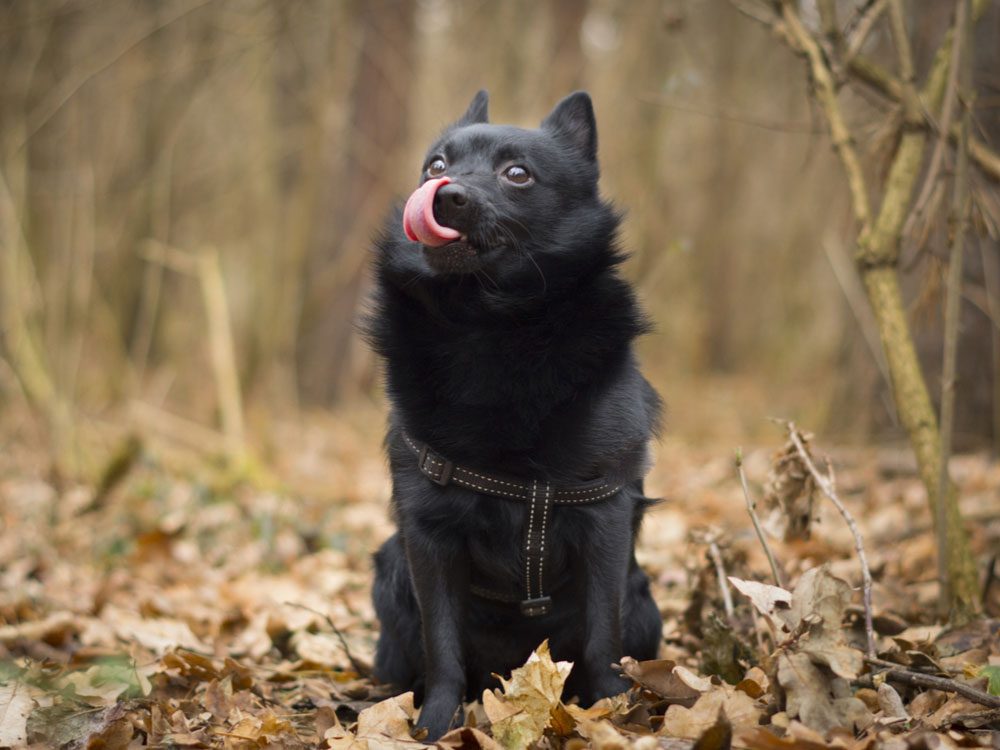 PHOTO: SHUTTERSTOCK
PHOTO: SHUTTERSTOCK
How to talk to dogs
You know that slightly ridiculous high-pitched voice we use when we’re speaking to dogs? It turns out that they actually love it. Researchers at York University in England say “dog-speak” not only helps improve attention from our canine friends but also strengthens the bond between owner and pet.
This retired trucker pairs long-haul drivers with dogs in need.
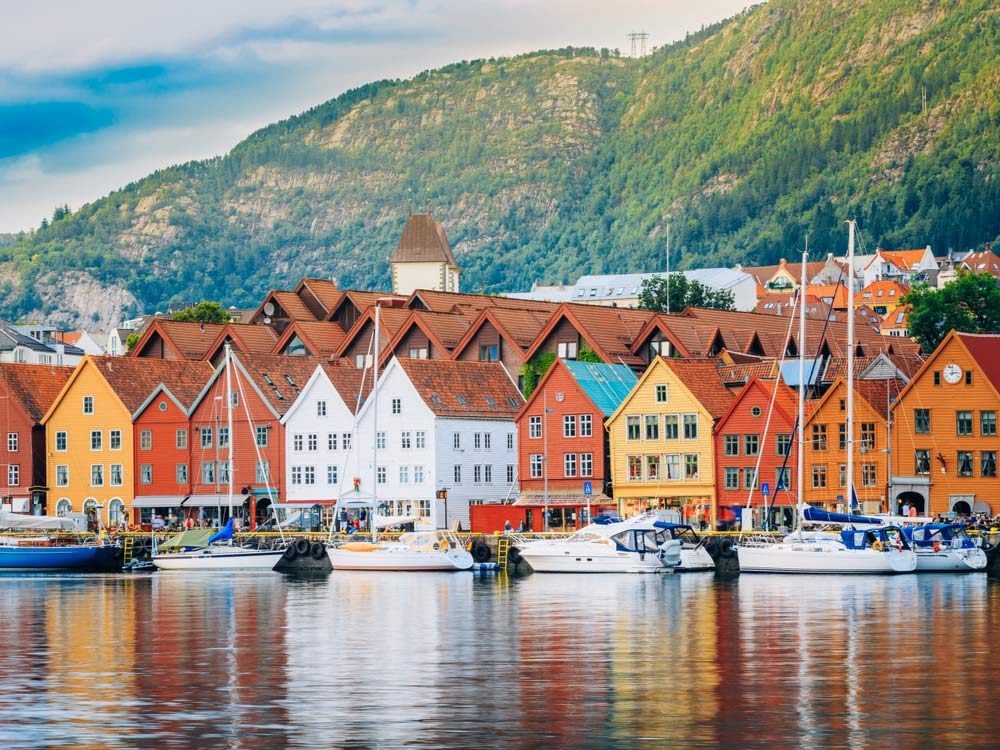 PHOTO: SHUTTERSTOCK
PHOTO: SHUTTERSTOCK
Norway to fly electric planes
Two years ago Norway saw the launch of the world’s first electric ferry, and now it has its sights set on the skies, as companies and regulators look towards a future of battery-powered air travel.
According to Dag Falk-Petersen, head of airport operator Avinor, by 2040 all of Norway’s short-haul flights will be electric. “When we have reached our goal, air travel will no longer be a problem for the climate,” he says.
Avinor is set to buy its first electric plane this summer, and plans to launch a tender offer to test a commercial route with a 19-seat electric plane from 2025.
Last year European aerospace company Airbus announced plans to develop a hybrid-electric airliner, with a demonstration model scheduled for completion by 2020. And low-cost airline easyJet has announced that it is working on plans for all-electric short-haul planes, to be launched within a decade.
Learn about the cool jobs you could have in the future.
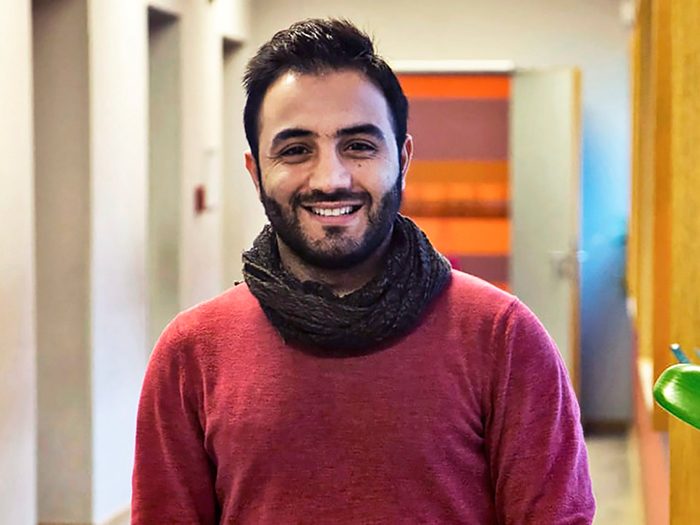 PHOTO: HANNA GIEFFERS
PHOTO: HANNA GIEFFERS
Going back to school
“I can’t explain to children who have come to Germany as refugees why it is that they are suddenly here,” says Basel Alsayed (pictured). “But I think I know how they feel.”
Formerly a teacher in Damascus, Alsayed left Syria to avoid being conscripted into the war, and ended up in Zehdenick, near Berlin. Having taken an 18-month refugee teacher-training course at Potsdam University, he now teaches at a primary school, where a third of the pupils are similarly displaced, hailing from countries such as Bosnia, Ghana and Syria.
“I was thrown in at the deep end,” says Alsayed, who had to master the German language during his course. “Suddenly, I was having to do my own homework instead of handing it out.”
“Basel is a firefighter,” says head teacher Gerald Schneider. “He translates when there are language problems with parents and steps in when other teachers are ill.”
And Germany needs more like him. A forecast by the Bertelsmann Foundation predicts a shortfall of around 35,000 primary school teachers in Germany by 2025.
Here’s one teacher’s brilliant strategy to stop future school shootings.
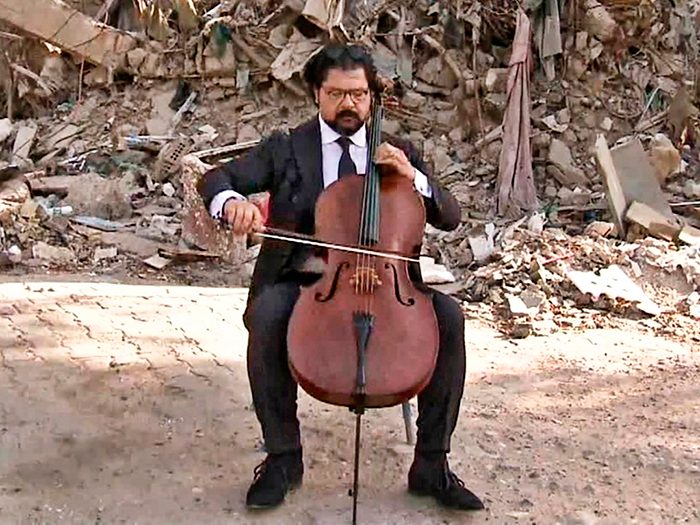 PHOTO: CNN.COM
PHOTO: CNN.COM
Defying terror with music
When a car packed with explosives detonated in the busy Mansour district of Baghdad, Karim Wasfi, the conductor of Iraq’s National Symphony Orchestra, did something unusual. As police secured the area, he took out his cello, sat on a chair and began to play amidst the debris. “It was an attempt to overcome grotesque acts of terror by an act of beauty,” he says.
Wasfi has since founded the Centre for Creativity-Peace through Arts, which brings young people from different ethnic backgrounds together to play music on Baghdad’s streets.
His approach has had some success. “One positive experience was when around 14 militiamen decided to give up their commitment to their weapons and to become musicians,” he reports.
This Canadian is pairing military veterans with guitars to combat PTSD.
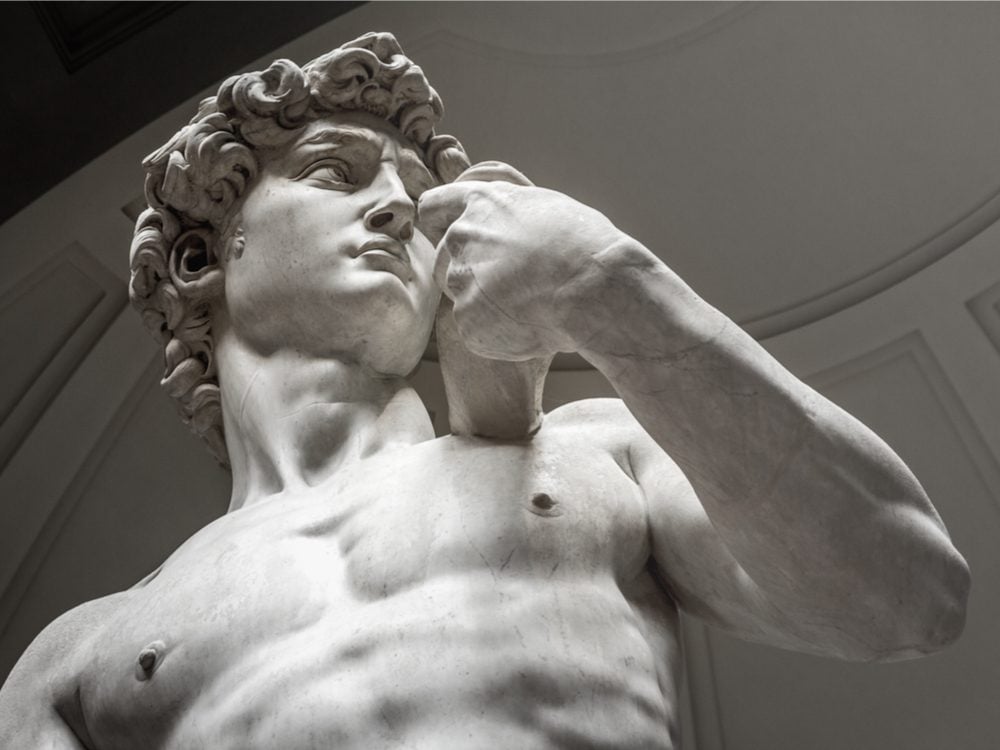 PHOTO: QQ7/SHUTTERSTOCK
PHOTO: QQ7/SHUTTERSTOCK
Michelangelo revealed
There’s good news for art lovers, with the announcement by Florence’s Bargello Museum that the public may finally be allowed to see sketches by Michelangelo on the walls of a secret room that has remained private since its discovery 40 years ago. The room, beneath the Medici Chapels in the city’s Basilico di San Lorenzo, could be opened to visitors before the end of next year.
Don’t miss these secret messages hidden in world famous paintings.
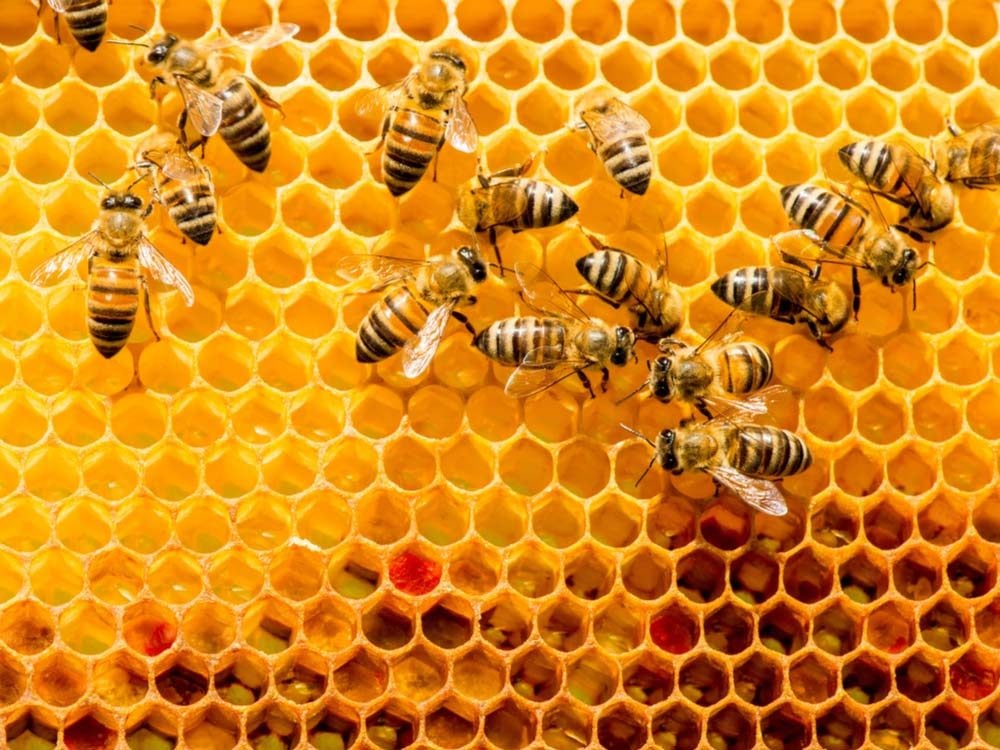 PHOTO: SHUTTERSTOCK
PHOTO: SHUTTERSTOCK
Help for the bees
Bees and other insects are vital to our food chain, as they pollinate three-quarters of all crops. But their numbers have plummeted in recent years, and this has been partly blamed on pesticides.
Five years ago, the EU banned the use of neonicotinoids, a widely used group of insecticides, on flowering crops that attract bees. And from the end of this year their use will now be banned completely, following an investigation that found the chemicals contaminate soil and water, and can then appear in wild flowers and succeeding crops.
“Banning these toxic pesticides is a beacon of hope for bees,” says Antonia Staats of campaign group Avaaz. “Finally governments are listening to their citizens, to the scientific evidence and to farmers.”
Want to do your part to help save the bees? Follow these strategies to combat bee extinction.
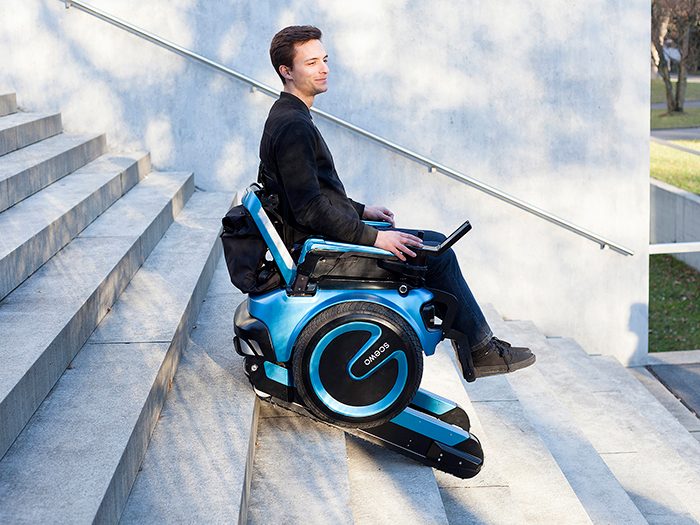 PHOTO: COURTESY OF SCEWO
PHOTO: COURTESY OF SCEWO
A smarter wheelchair
The design of the wheelchair has changed little since it was invented in the late 18th century. But now a group of young Swiss innovators has designed a revolutionary new mobility device for the disabled.
Their “wheelchair of the future”, named Scewo, can climb stairs thanks to a set of retractable rubber tracks, allowing users to reach places that would otherwise have been inaccessible.
“Stairs are climbed sitting backward and driven down in the forward position,” says Thomas Gemperle, one of 10 students who developed the Scewo in partnership with Zurich’s Federal Institute of Technology and University of the Arts.
The chair has many other novel features, too. For example, a user can steer it simply by shifting body weight, and cannot tip it over. Gemperle says he hopes the Scewo’s unique qualities will make people look at users “with admiration instead of pity.”
A commercial launch is planned for the mddle of next year.
These are the medical discoveries you’ll wish you knew sooner.
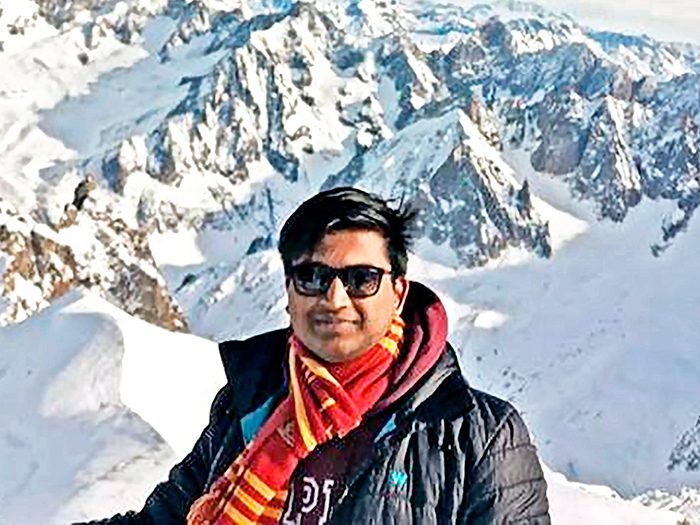 PHOTO: COURTESY OF KARTIKEYA MANGALAM
PHOTO: COURTESY OF KARTIKEYA MANGALAM
Smart thinking averts emergency landing
Engineering student Karttikeya Mangalam was on a flight from Geneva via Moscow to New Delhi when a fellow passenger with type 1 diabetes was taken ill. The 30-year-old Dutchman had lost his insulin pump at airport security and was developing dangerously high blood sugar levels: he had cartridges of fast-acting insulin with him but no way to inject them.
A doctor on board tried to use a pen-style insulin injector, but the device malfunctioned. Mangalam took over and went into action.
Using the plane’s wi-fi, he studied diagrams of the injector online, and used a spring extracted from a fellow passenger’s ballpoint pen to fix the device. The doctor then injected the Dutchman, who recovered, and an emergency landing was averted. “It made me realize the importance of the basic skills we are taught in our freshman year,” Mangalam says.
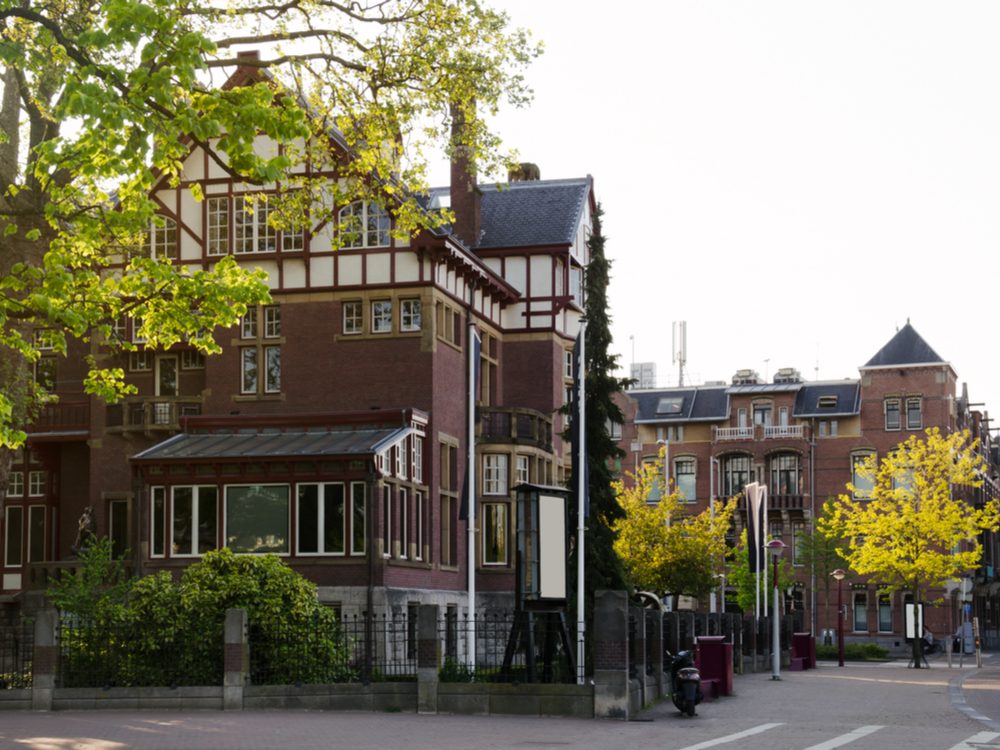 PHOTO: SHUTTERSTOCK
PHOTO: SHUTTERSTOCK
Green parking spaces
A pilot scheme in the Amsterdam suburb of Segbroek is offering residents the chance to turn their parking space into a bit of greenery—such as a sun terrace or play space for kids. In return, participating residents’ vehicles are stored for free in a car park. The long-term aim is to encourage people to use car-sharing schemes.
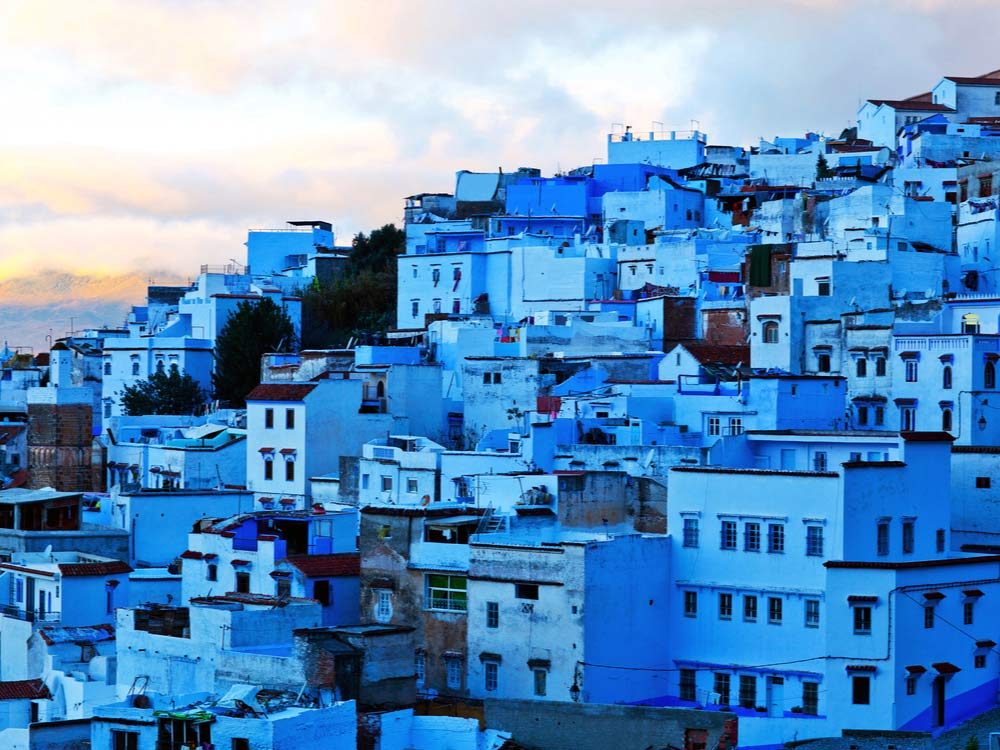 PHOTO: SHUTTERSTOCK
PHOTO: SHUTTERSTOCK
Boost for Africa tunnel
Long-held hopes of building a tunnel connecting Spain with Morocco have been raised with a new study concluding that the major technical challenges can be overcome.
The idea of a tunnel between Europe and Africa goes back to the 19th century, but previous projects have hit the buffers over difficult tunneling terrain and funding. Supporters say the 38km-long tunnel could be used to transfer solar energy from the Sahara to Europe and would slash journey times for freight traffic between Madrid and Marrakesh.
The scheme would require eight specialist boring machines to be built and could cost up to 8 billion euros. “All institutions involved have to be willing to do it,” notes Rafael García-Monge Fernández, head of the Spanish government committee considering the tunnel’s viability.
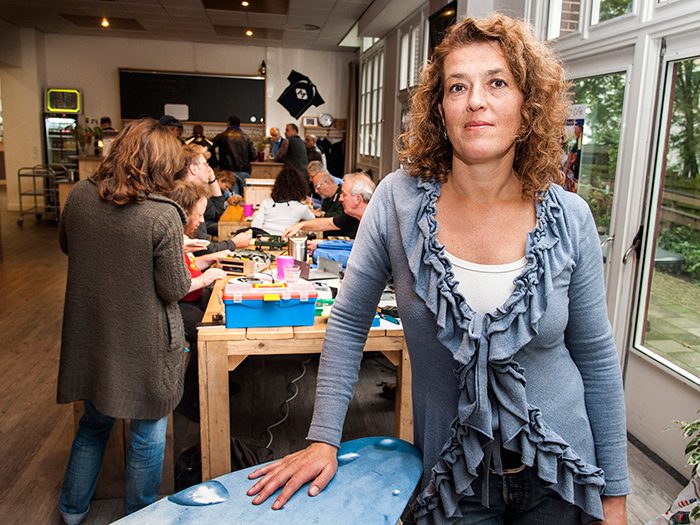 PHOTO: MARTIN WAALBOER/REPAIR CAFÉ INTERNATIONAL FOUNDATION
PHOTO: MARTIN WAALBOER/REPAIR CAFÉ INTERNATIONAL FOUNDATION
Repair Café inspires the world
“In Europe, we throw out so many things,” says Martine Postma, long frustrated by our throwaway culture. “I wanted to do something about it.”
What she did was to open the first Repair Café in Amsterdam, a social space where people could learn to fix anything from vacuum cleaners and toys to jewellery and clothes—rather than dump them in the trash.
The idea quickly spread. This year, the Amsterdam café marks its 10th anniversary—and has now inspired more than 1,500 other repair cafés around the world.
For a small fee, Postma’s Repair Café Foundation helps people in other cities open their own cafés. It provides a step-by-step manual along with other support and the basic approach is the same.
Volunteer repair experts show café-goers how to fix their broken items. “They like sharing the knowledge and helping other people,” says Postma. “It’s about doing something together, in the here and now.”
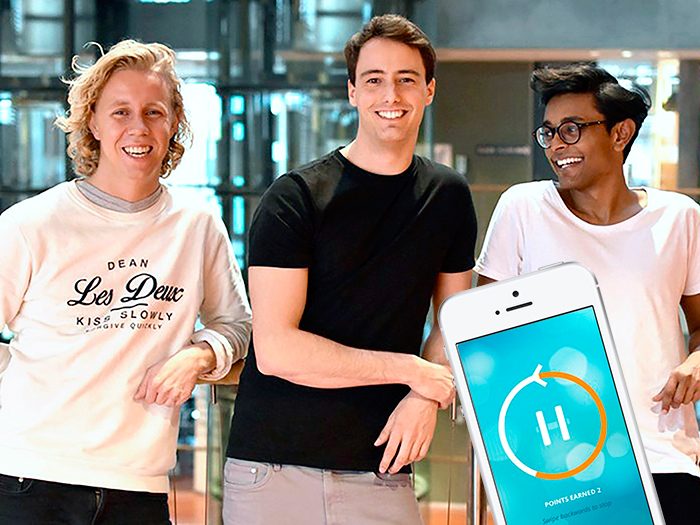 PHOTO: COURTESY OF HOLD
PHOTO: COURTESY OF HOLD
Breaking an addiction
Smartphones have become such a part of modern life that for many of us living without one feels impossible—and their power to distract has been shown to make people less productive.
Now three entrepreneurs who met at Copenhagen Business School—Maths Mathisen, Florian Winder and Vinoth Vinaya—have launched an app to combat smartphone addiction, particularly among students.
Called Hold, the free app tracks the continuous minutes during the day that a person doesn’t use their smartphone. It then awards the user points for showing restraint. The longer they resist checking their device, the more points they get. Those points can then be used to purchase products and services—such as cinema tickets—or enter competitions or donate to charity via the app’s marketplace.
“We want to reward users for not using their phone, rather than punish them,” says co-founder Maths Mathisen.
Trials at universities in Scandinavia and the UK have seen students report greater concentration levels as they hold off checking their phones for notifications.
These random acts of kindness will make you proud to be Canadian.

























